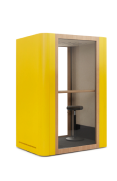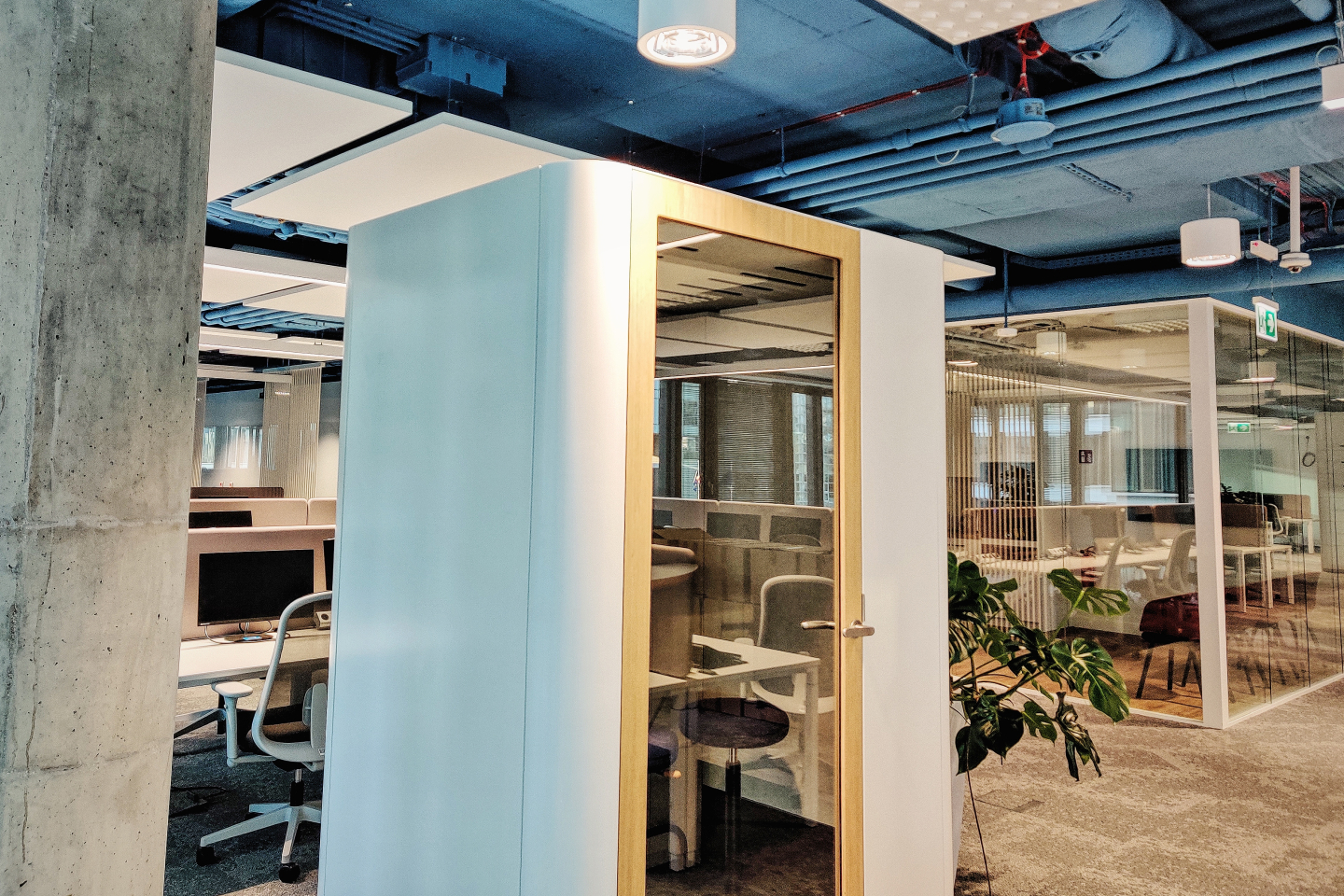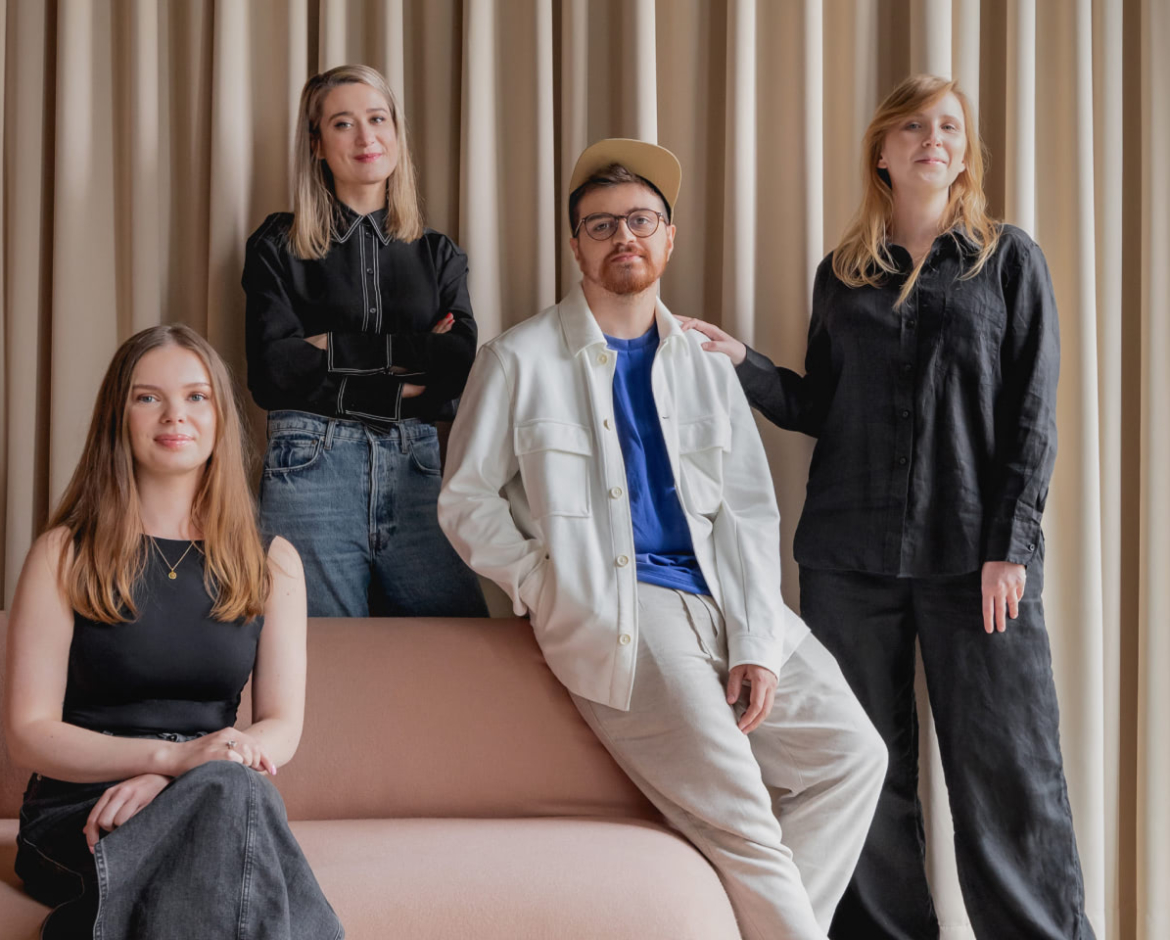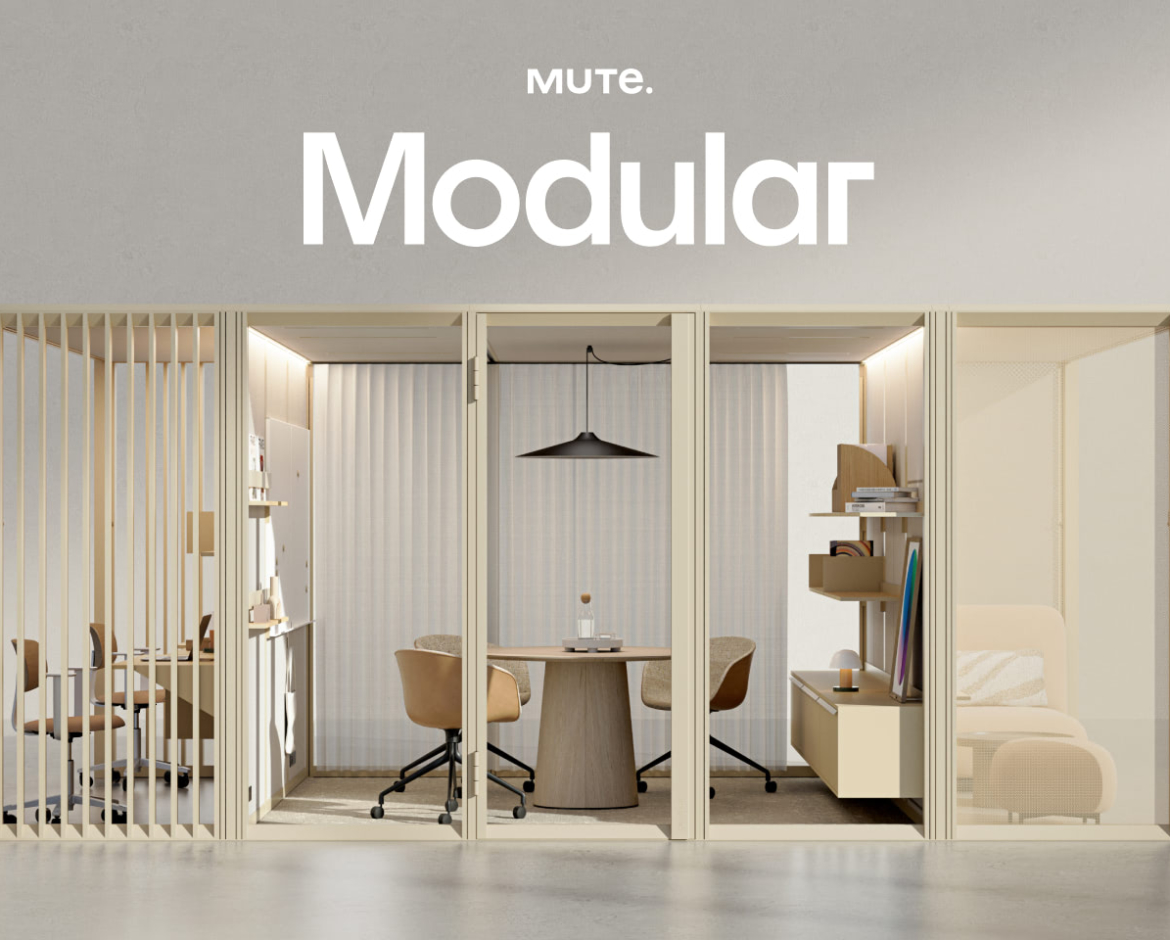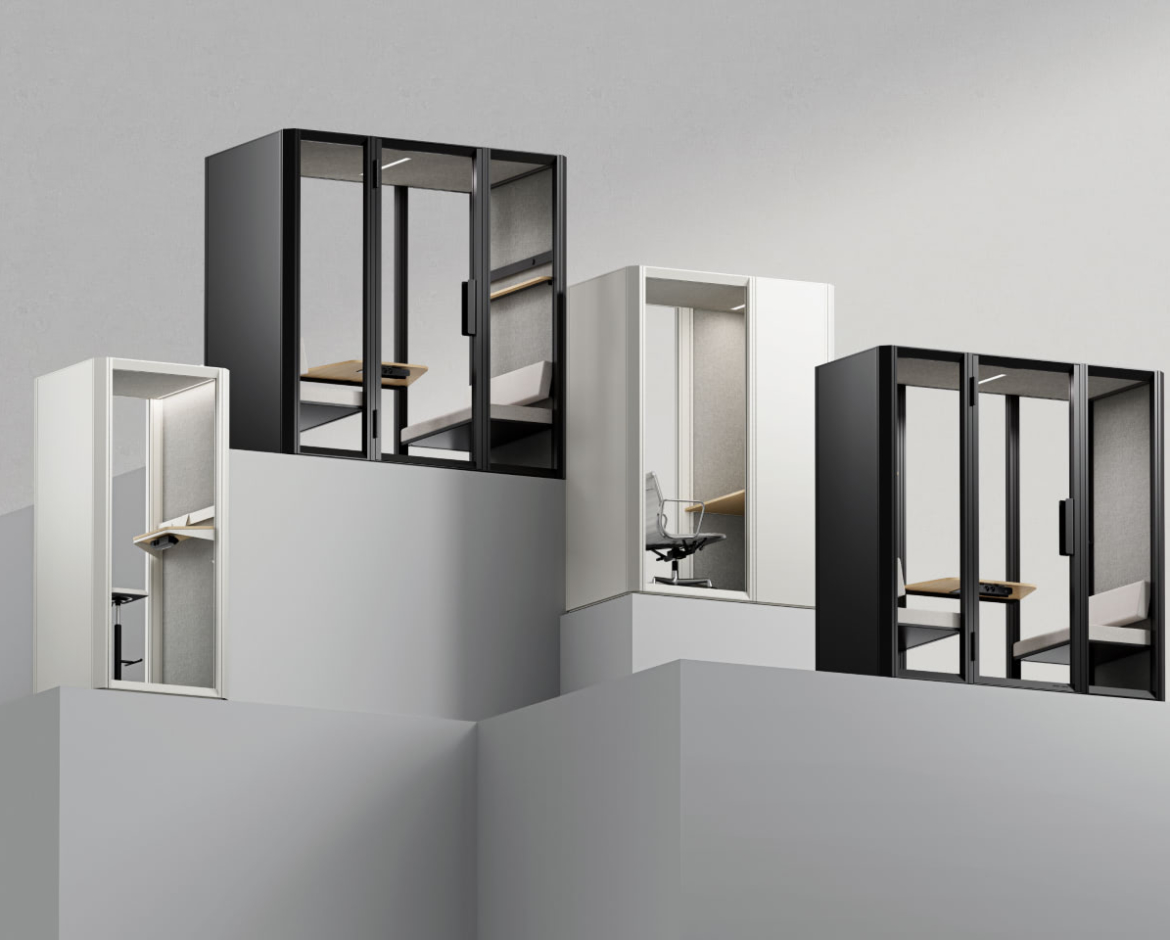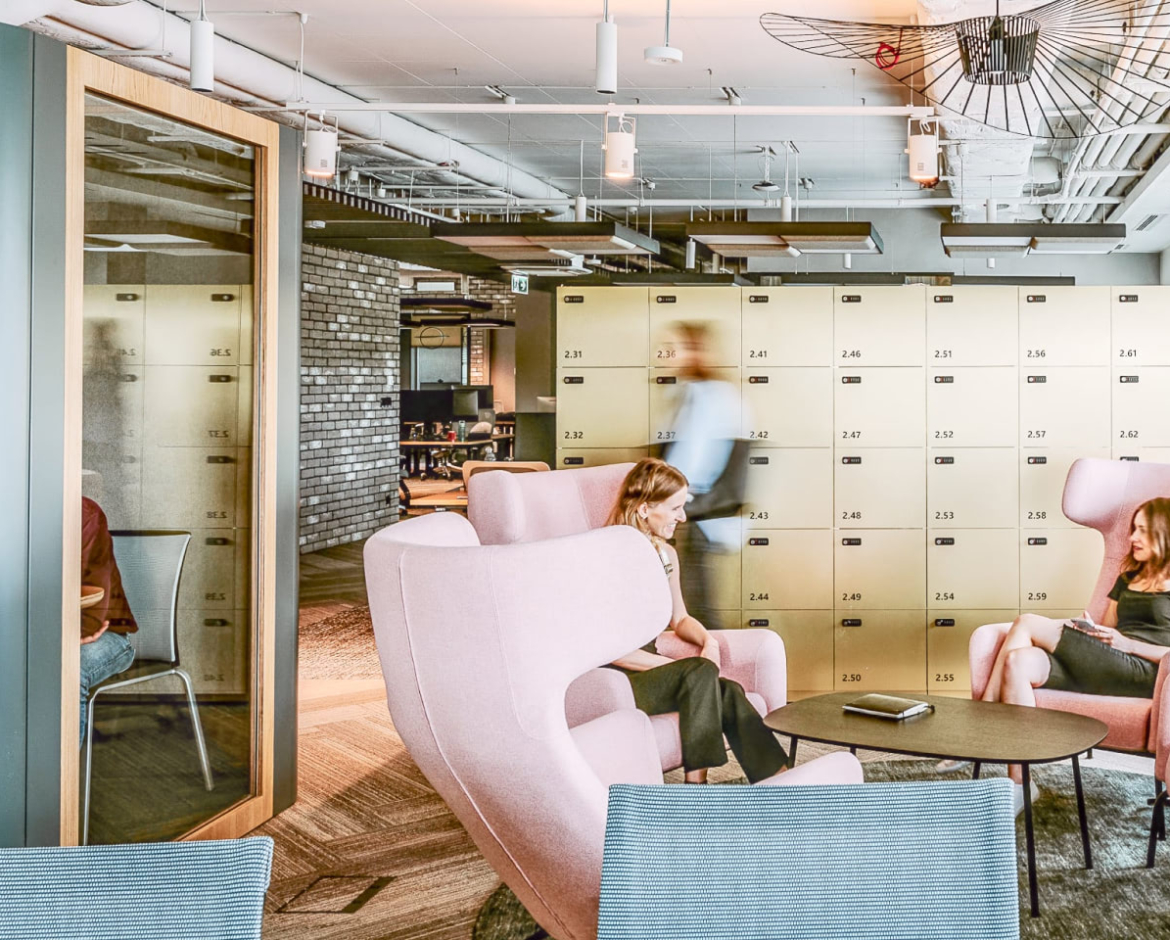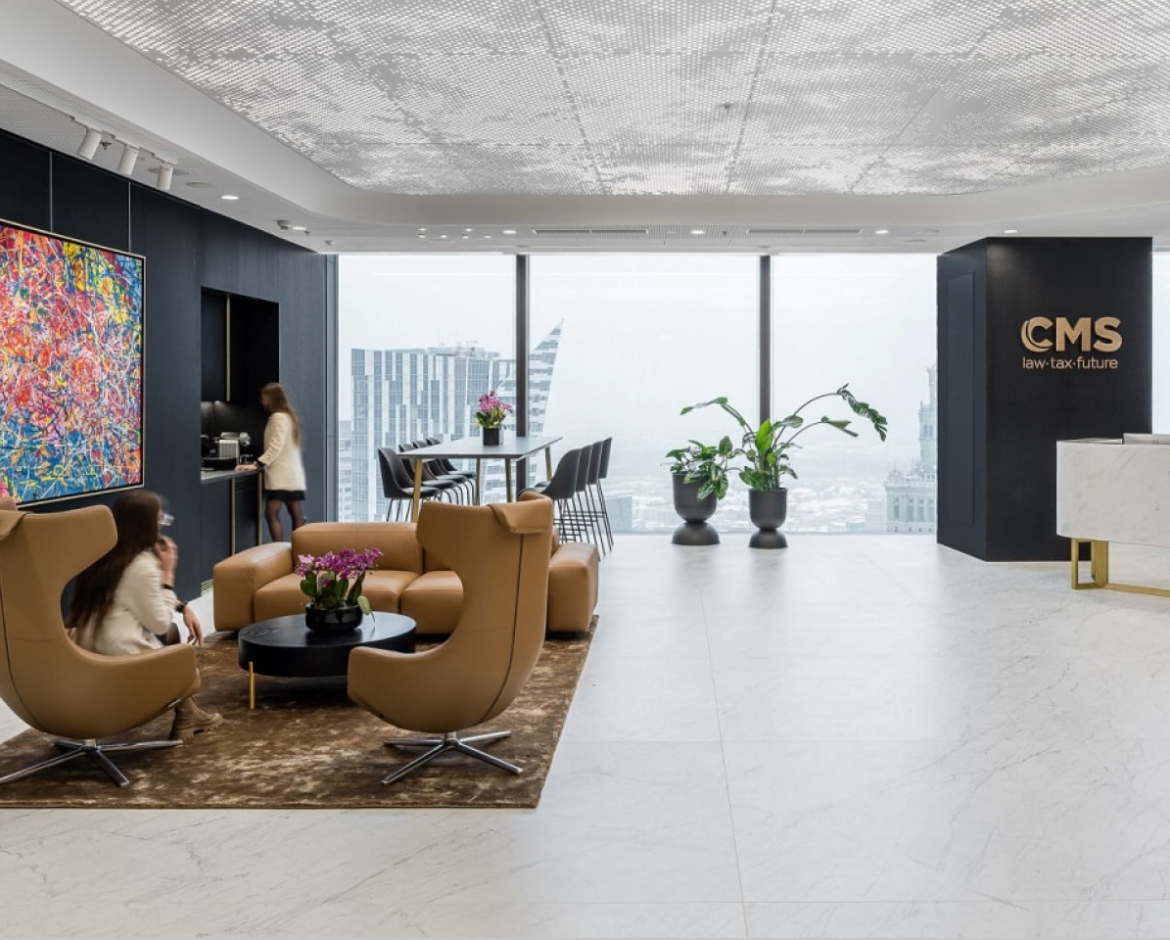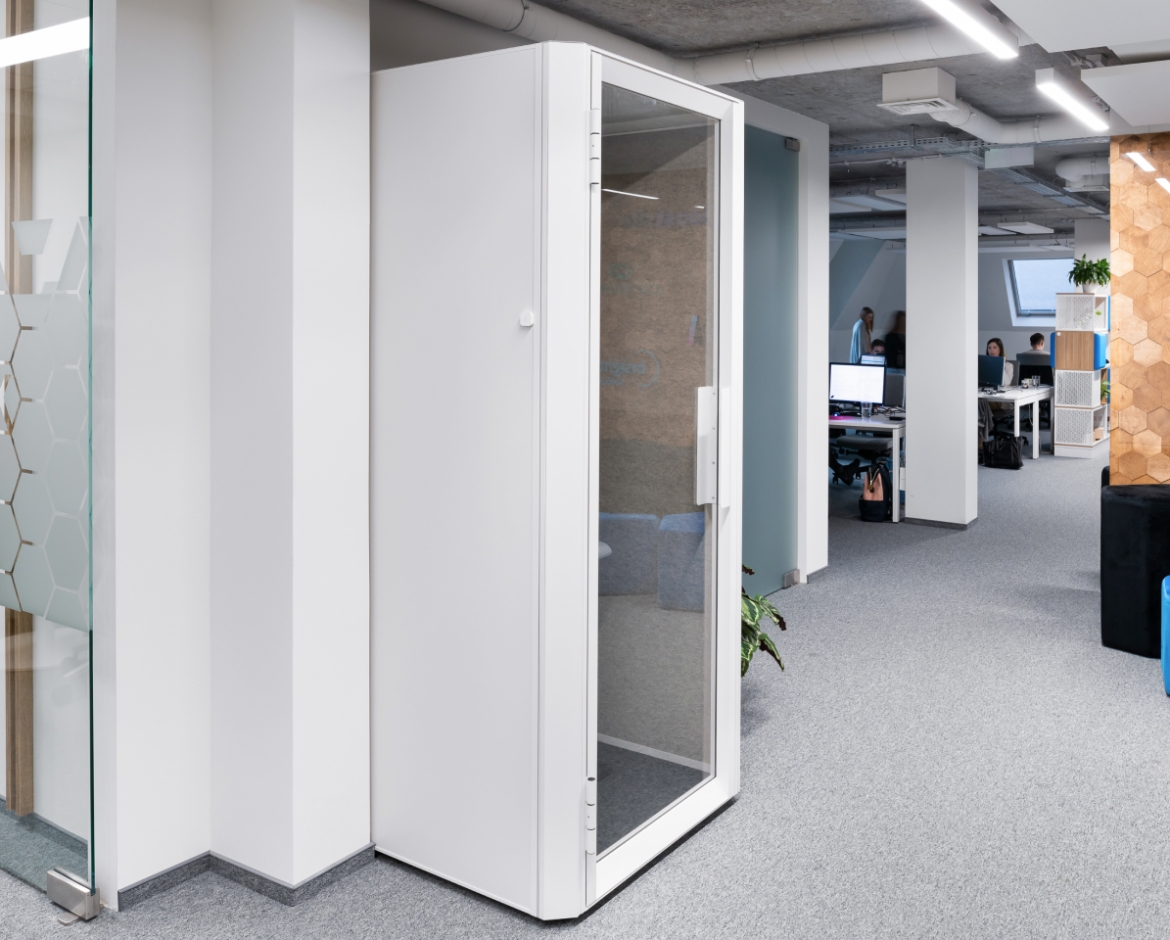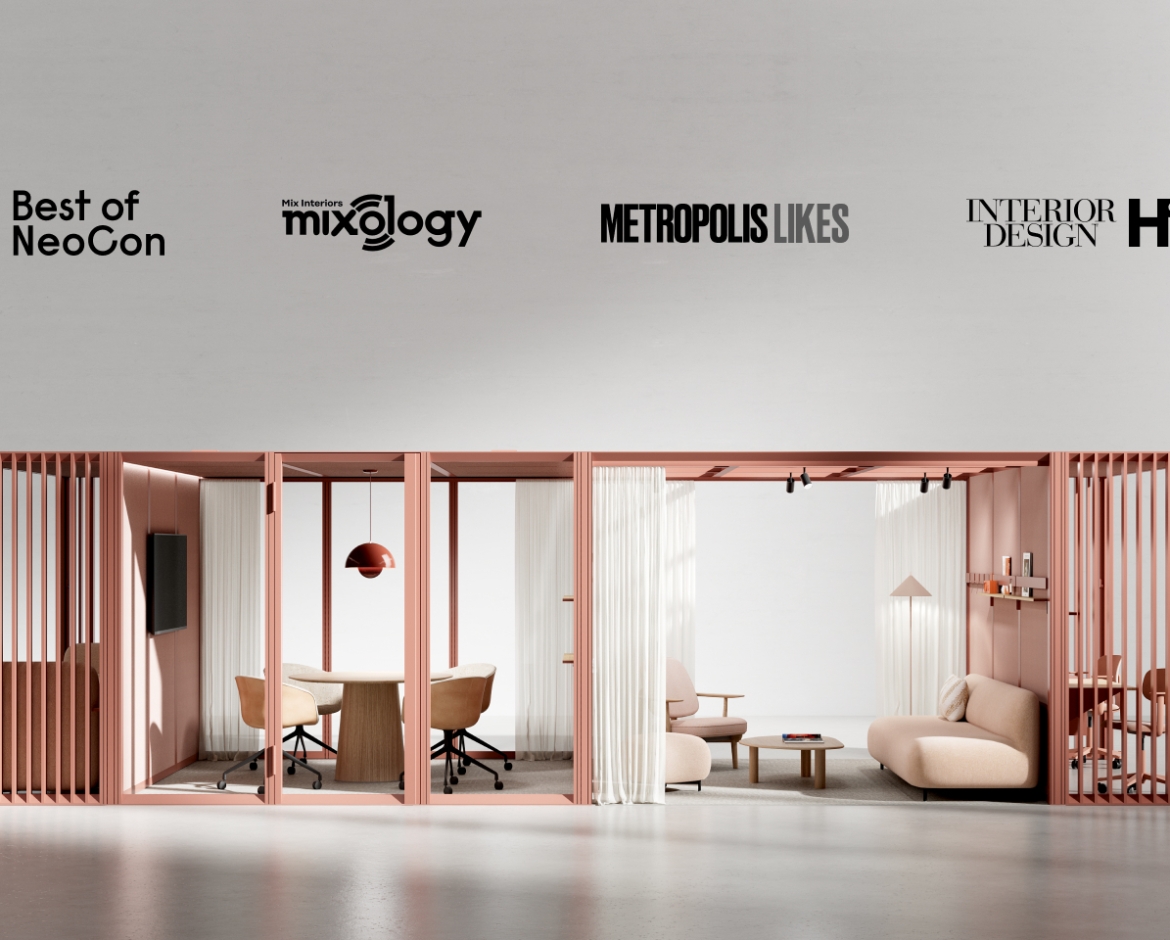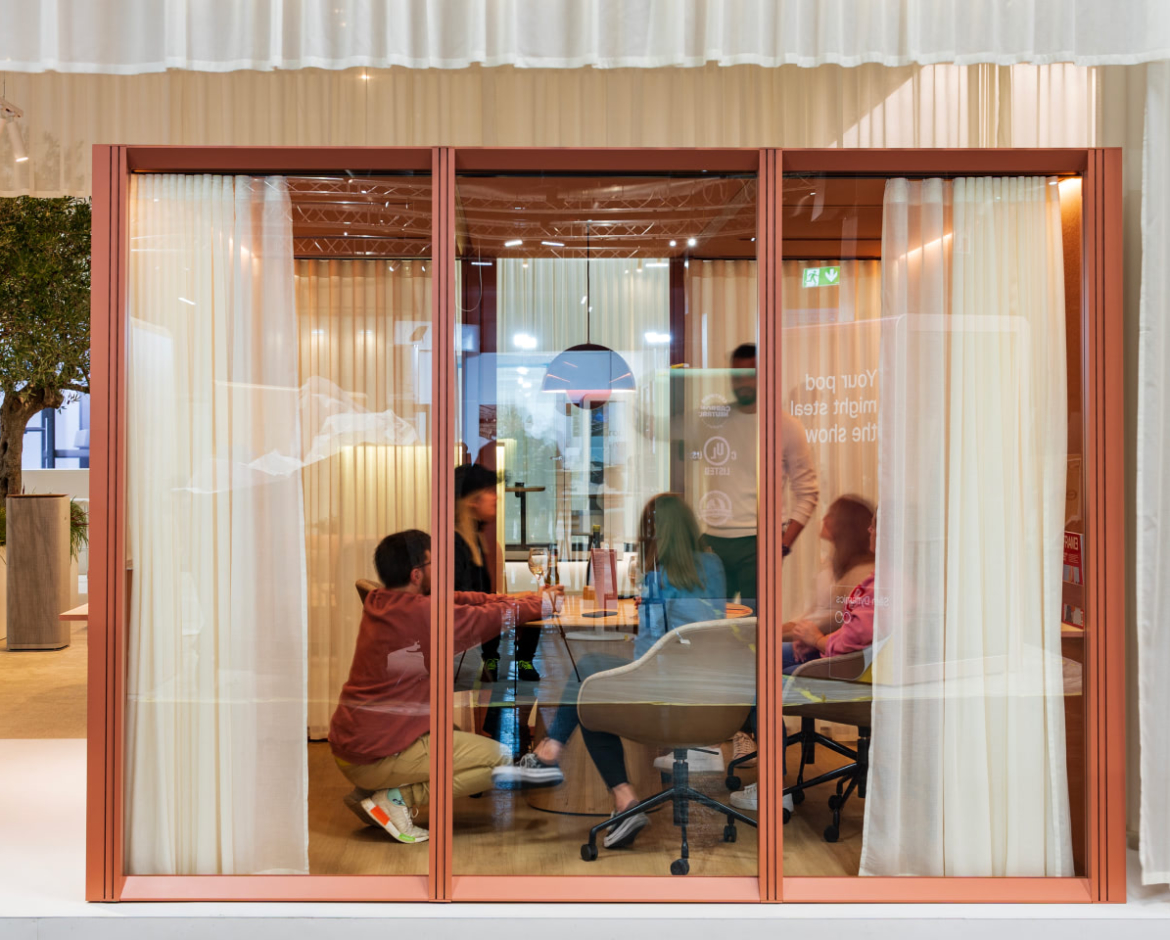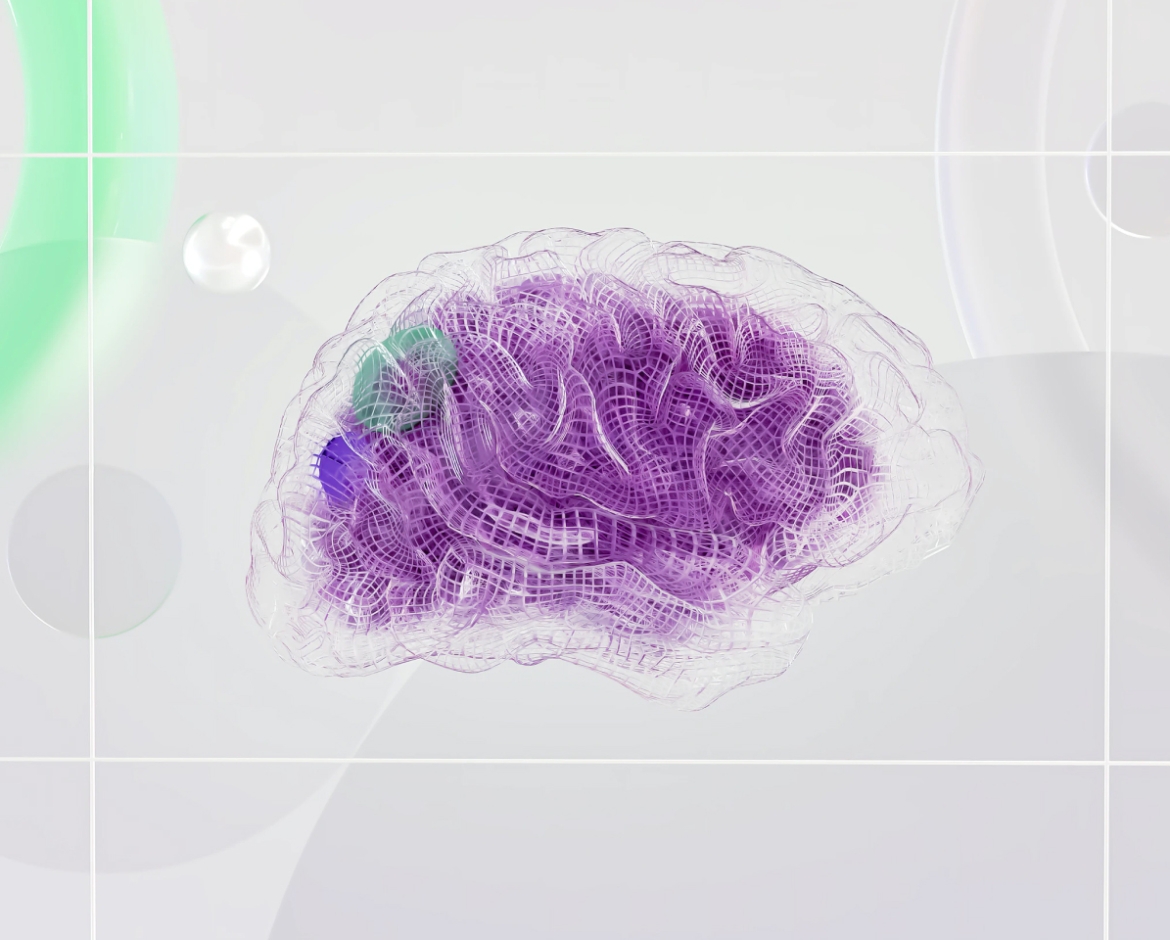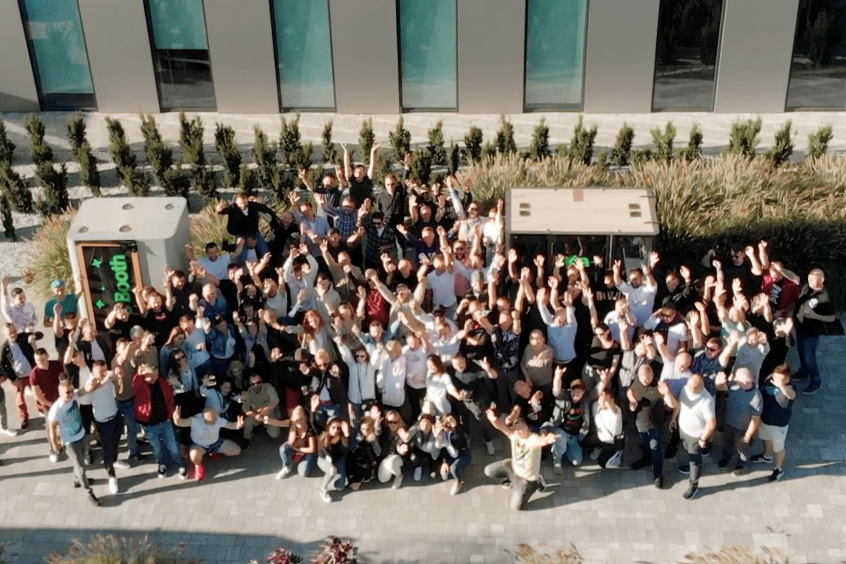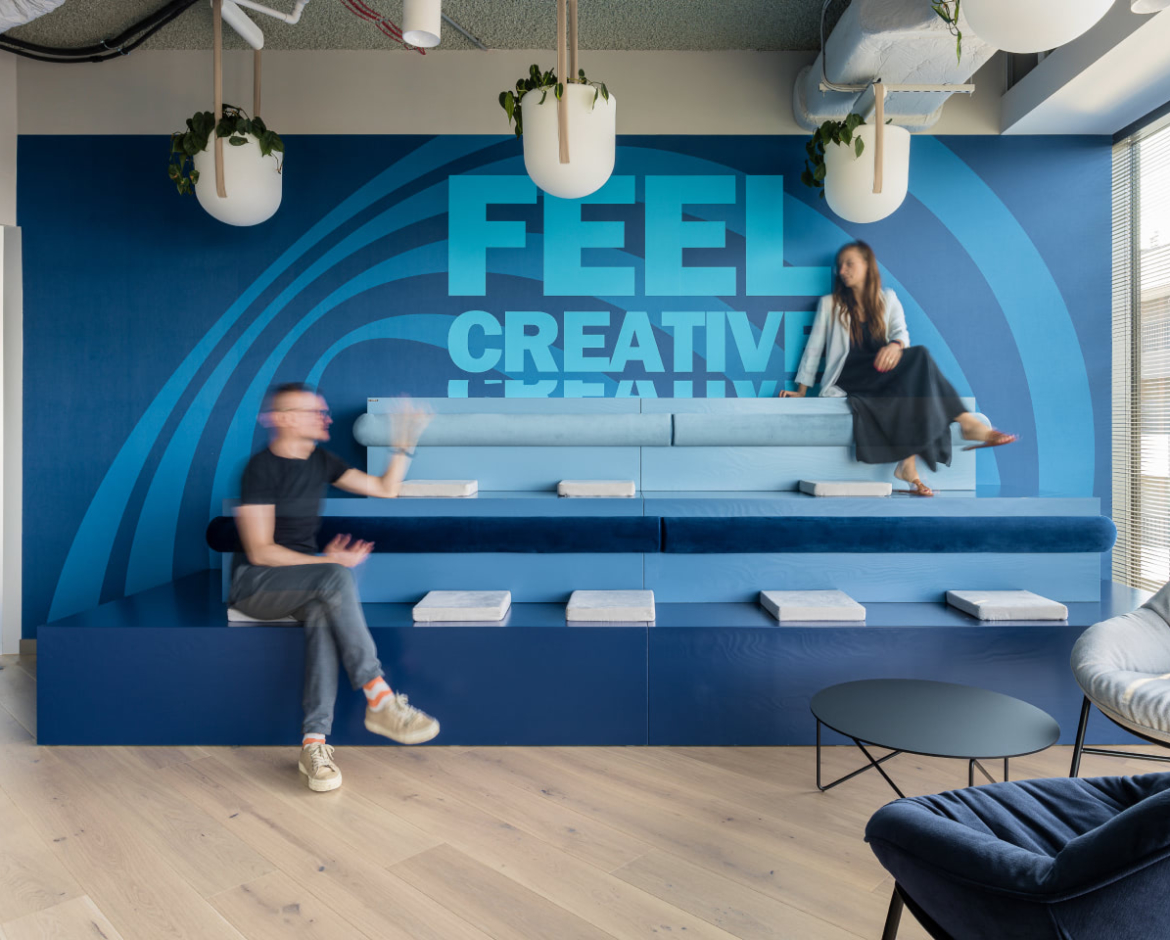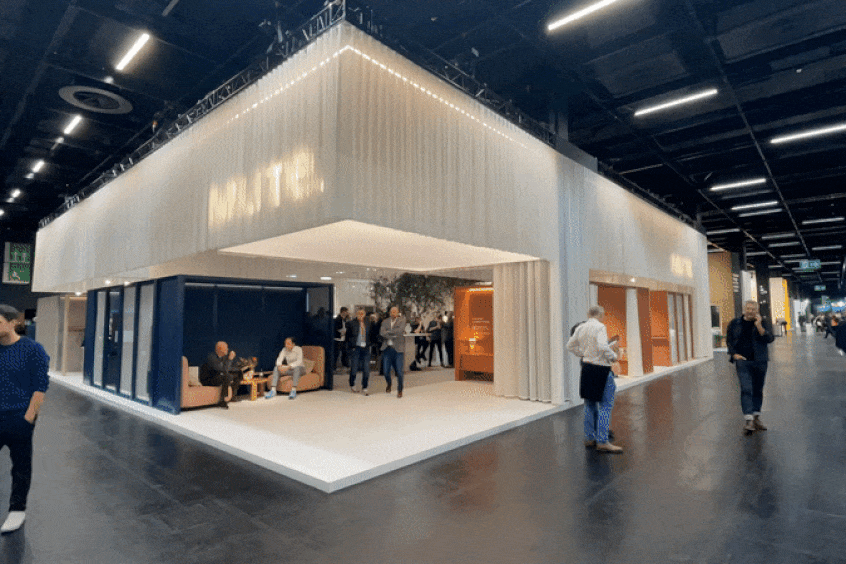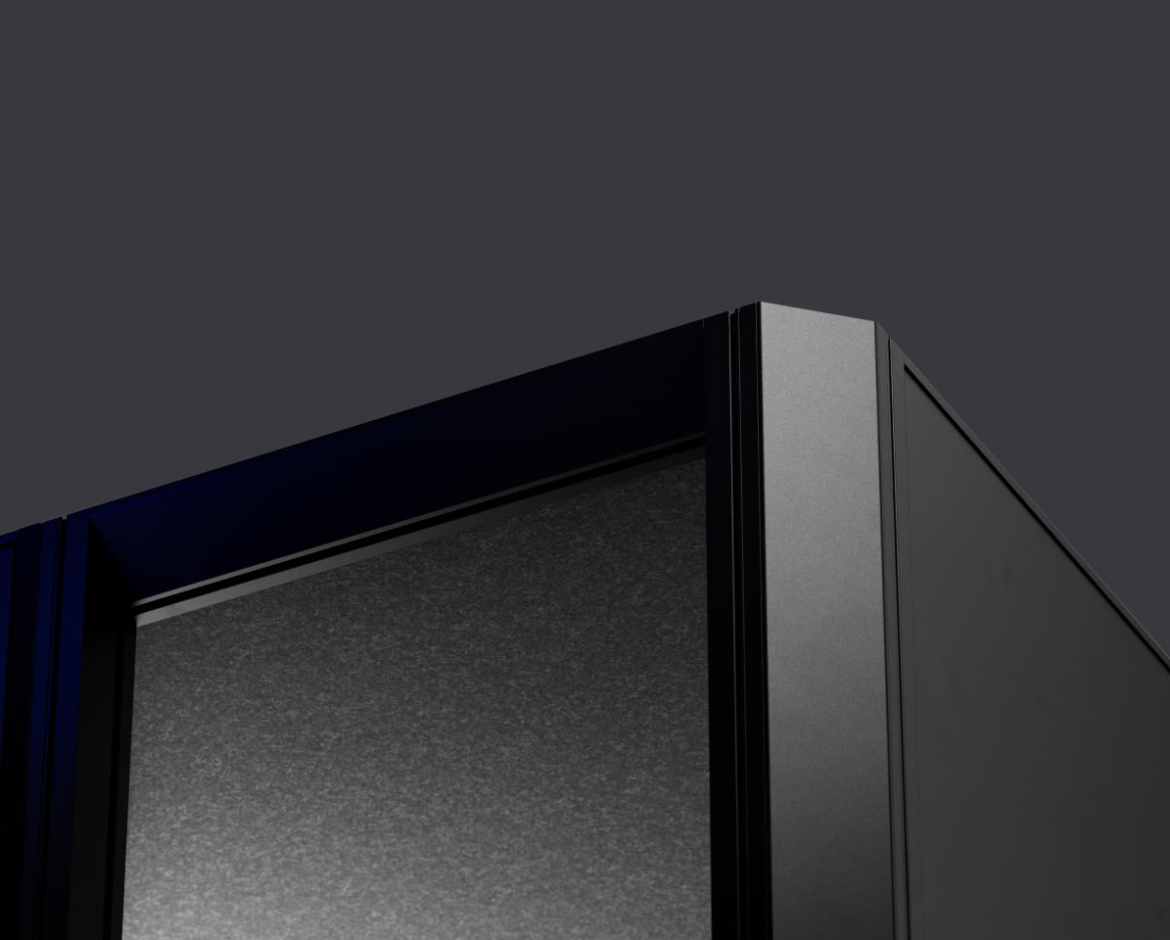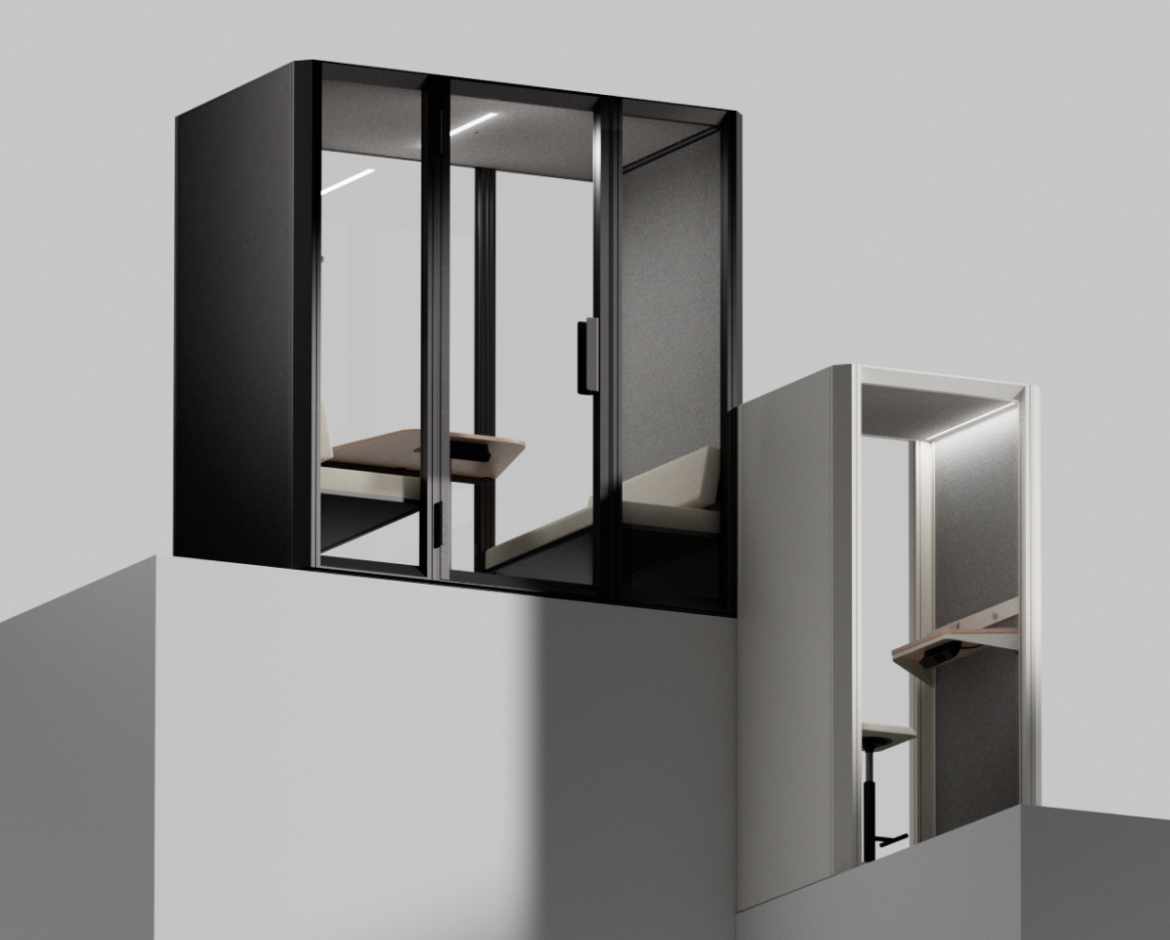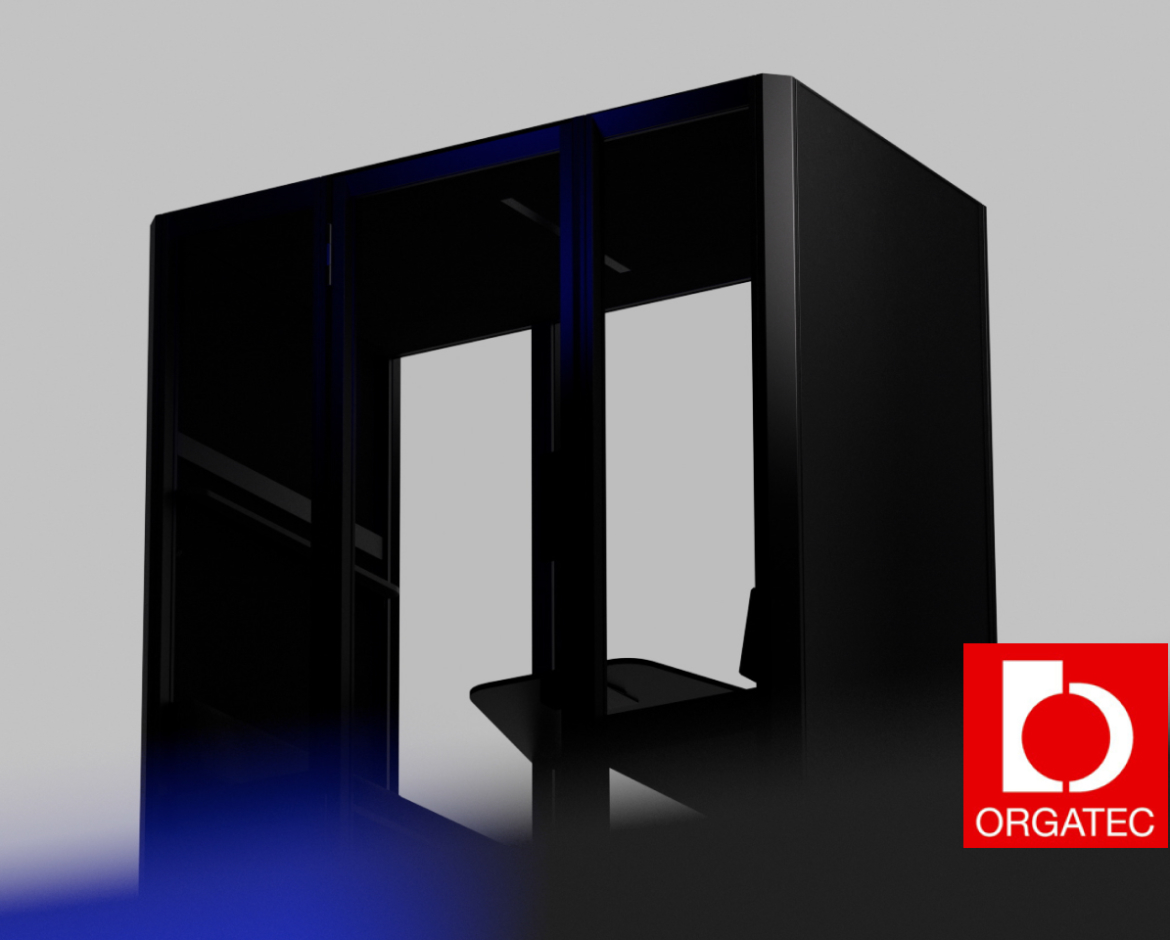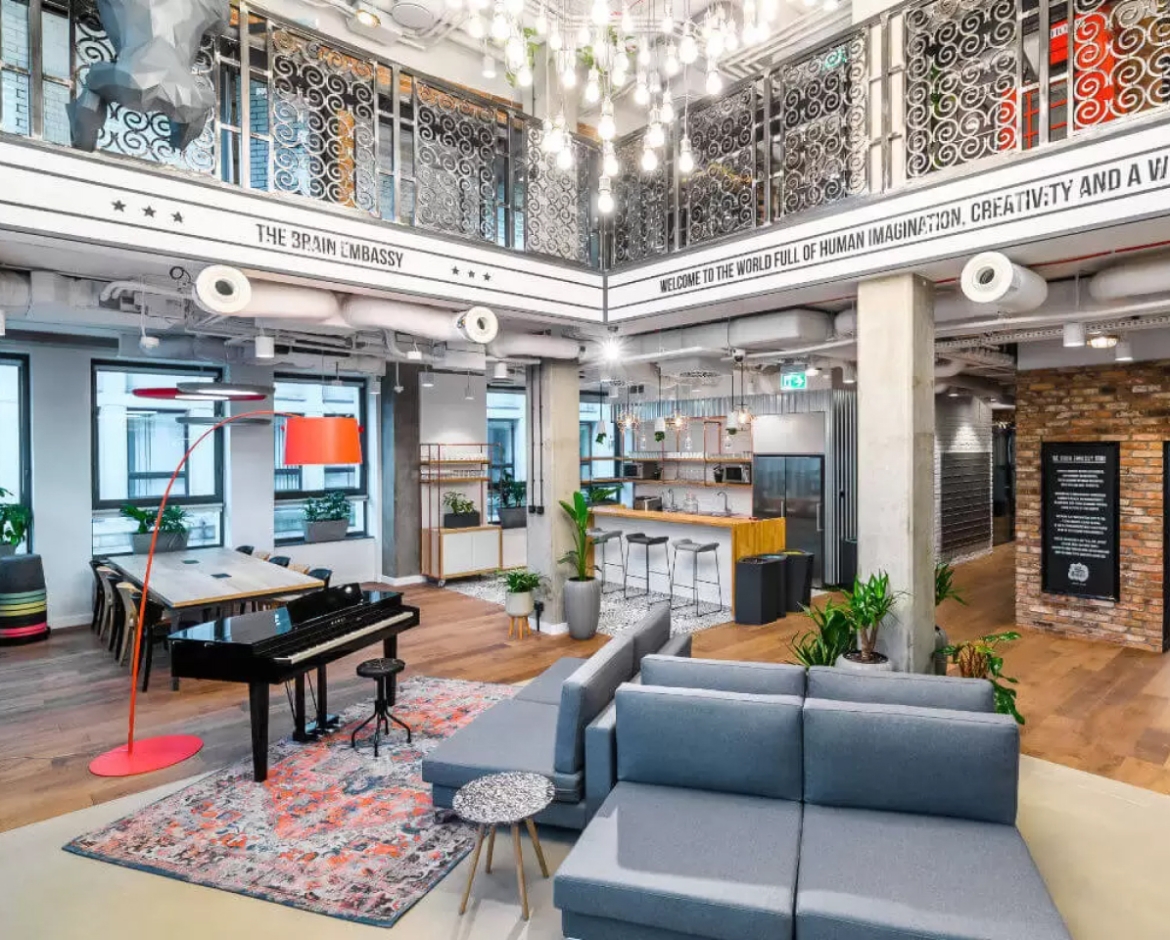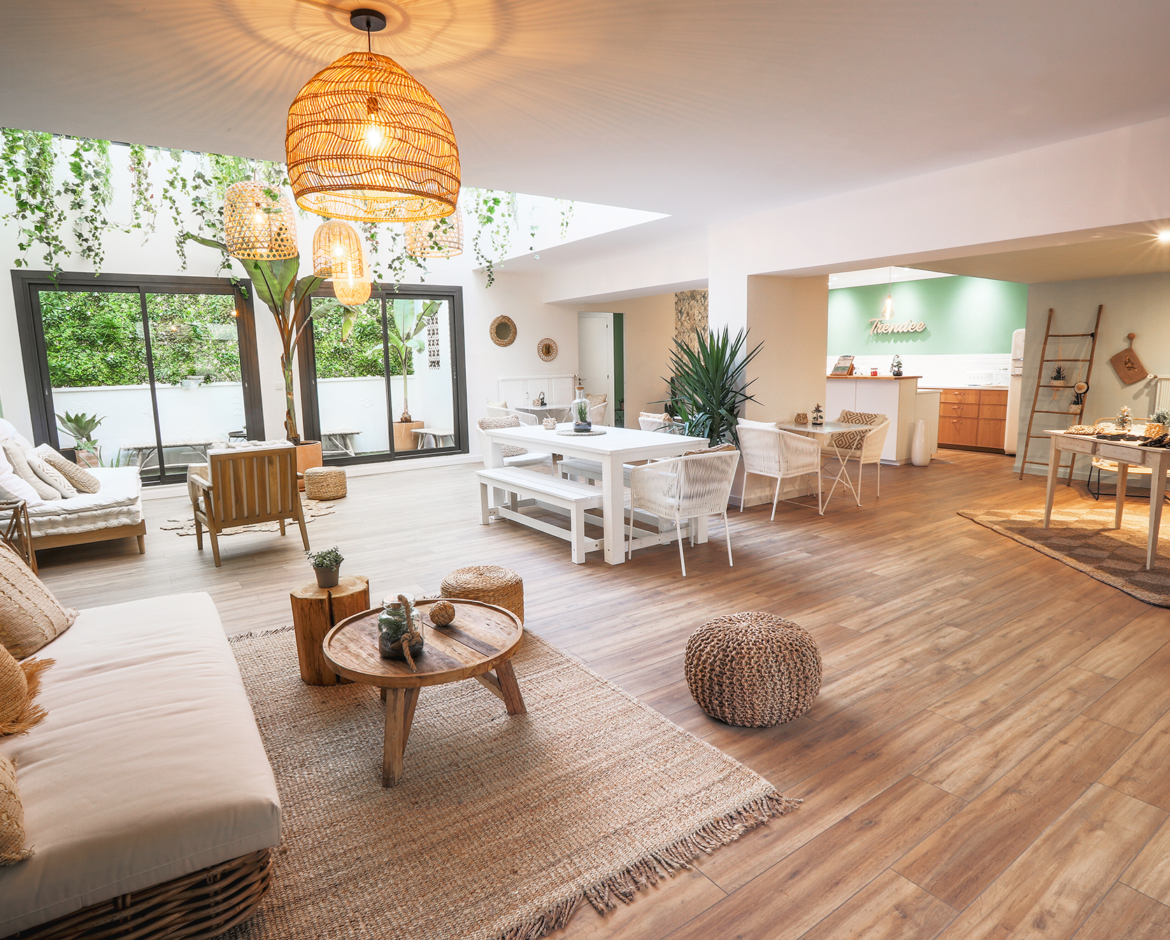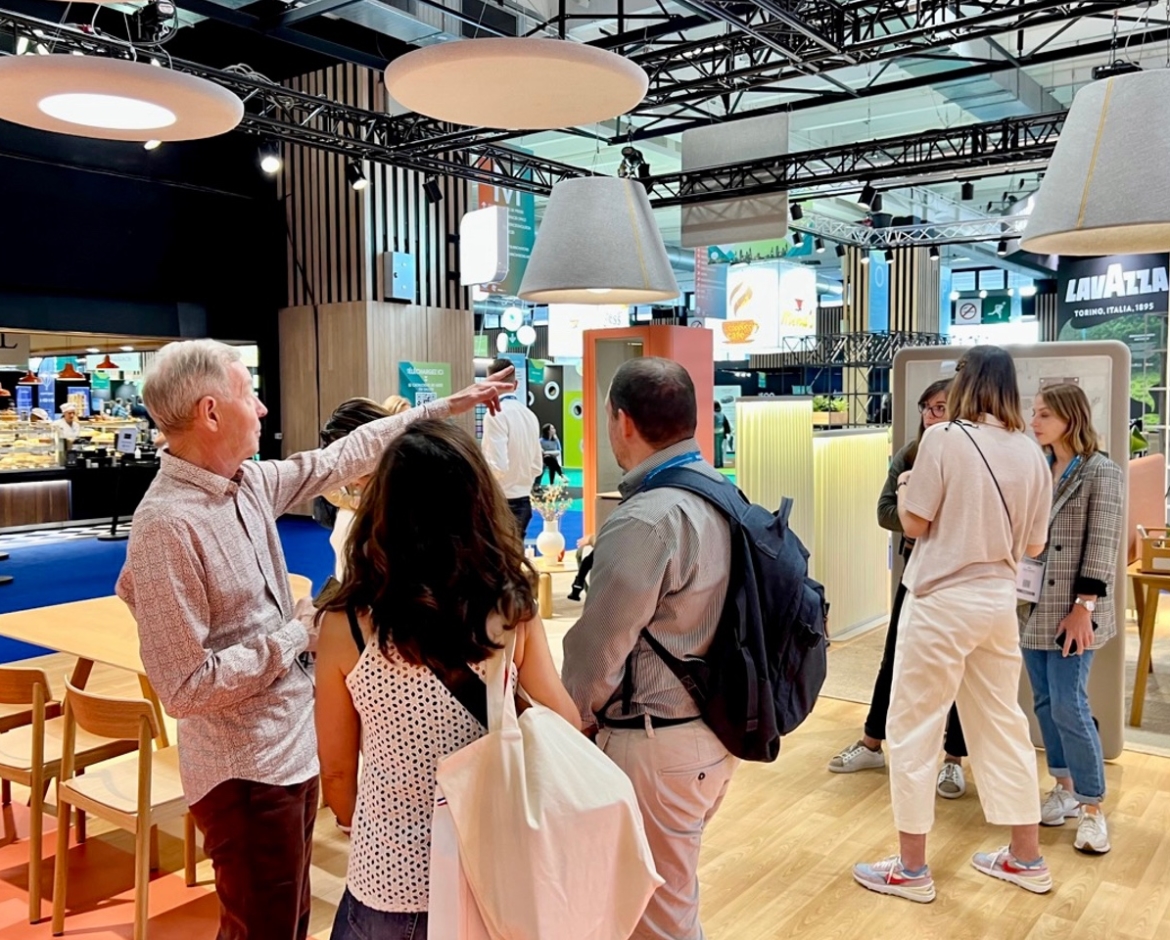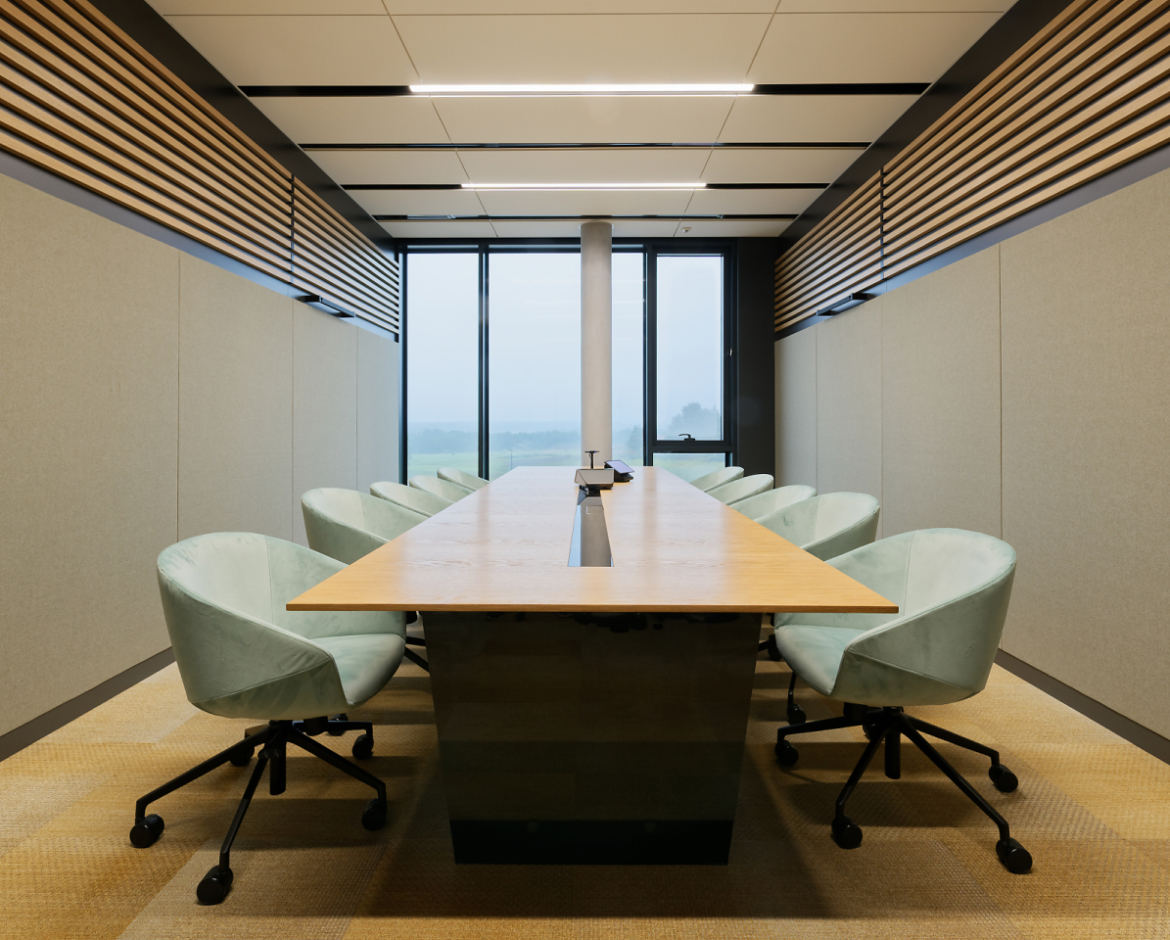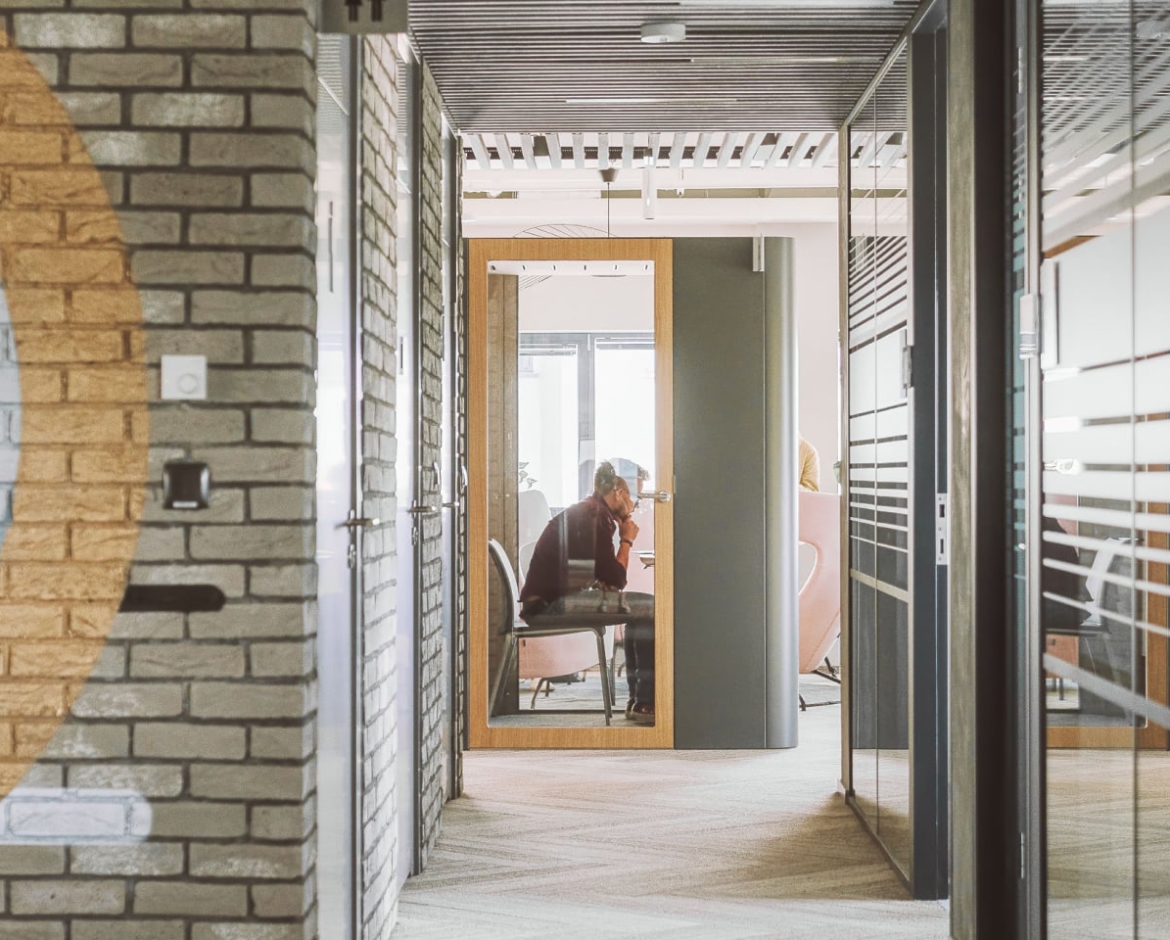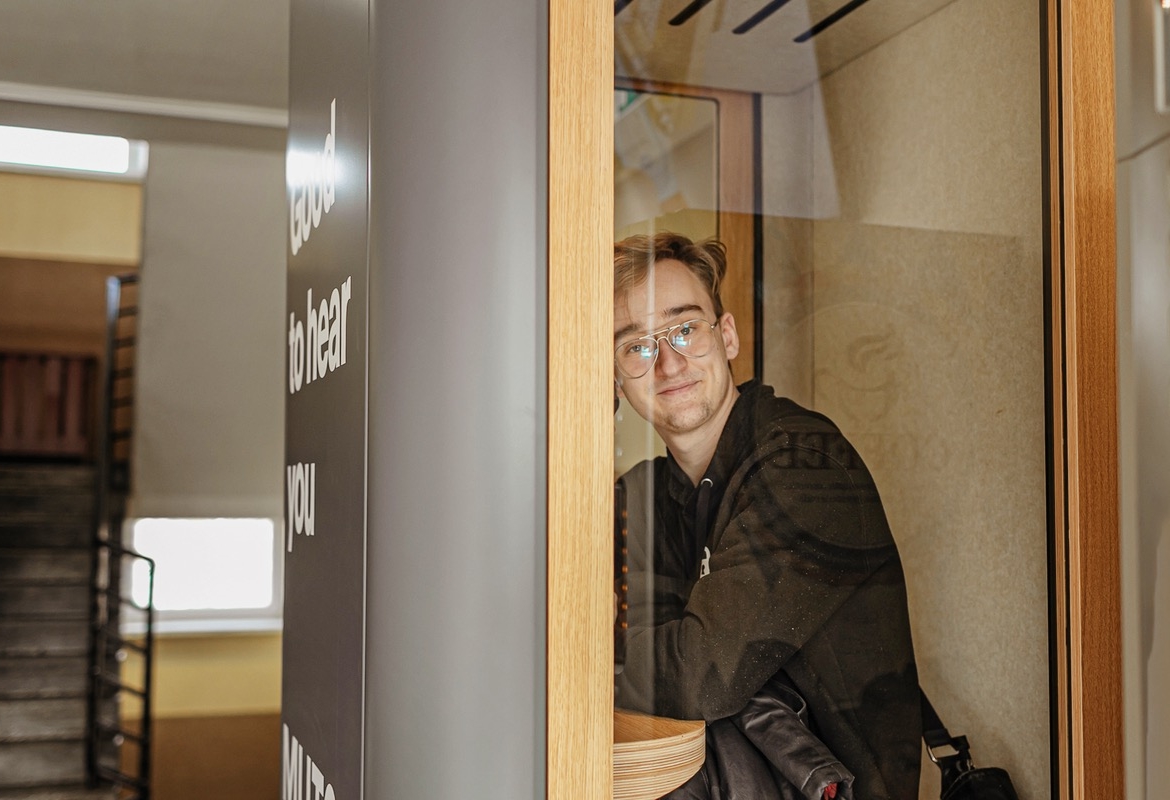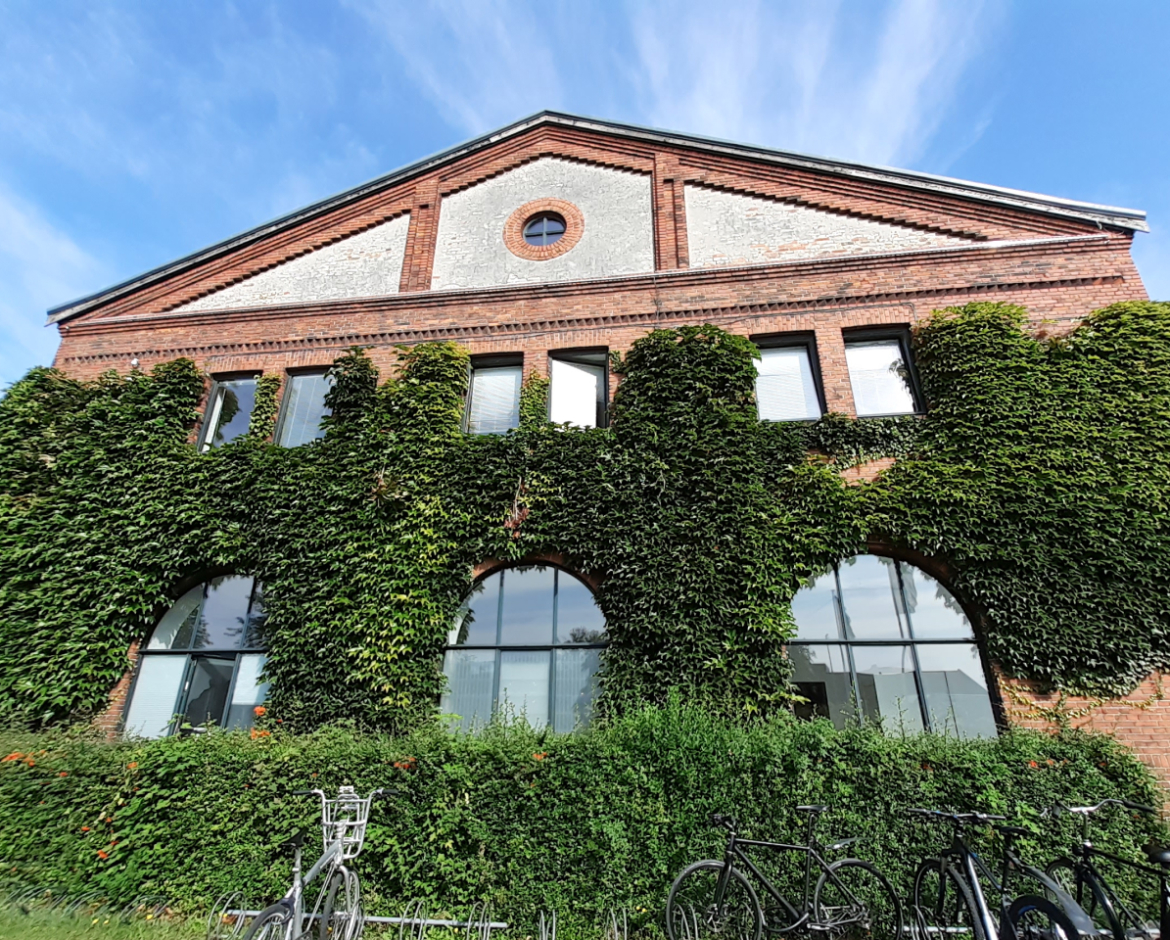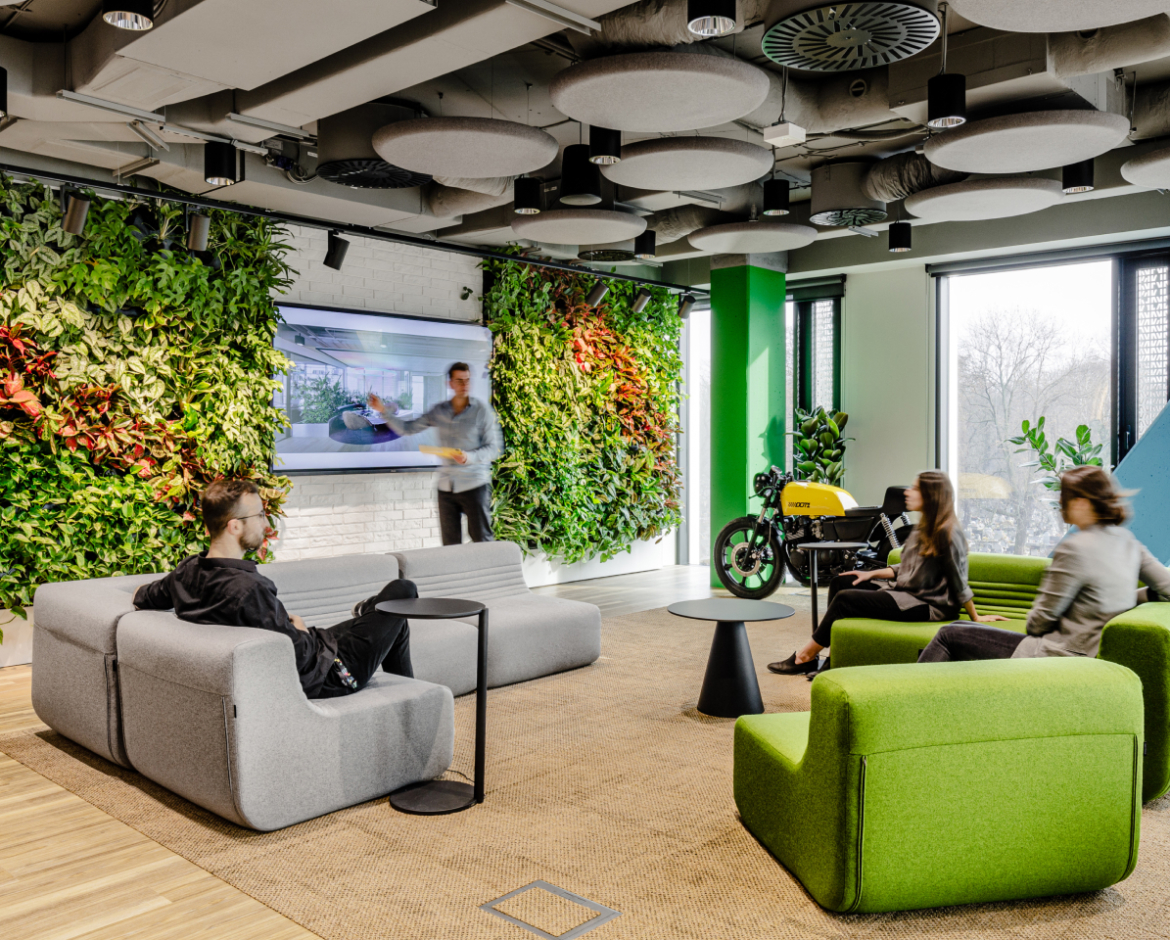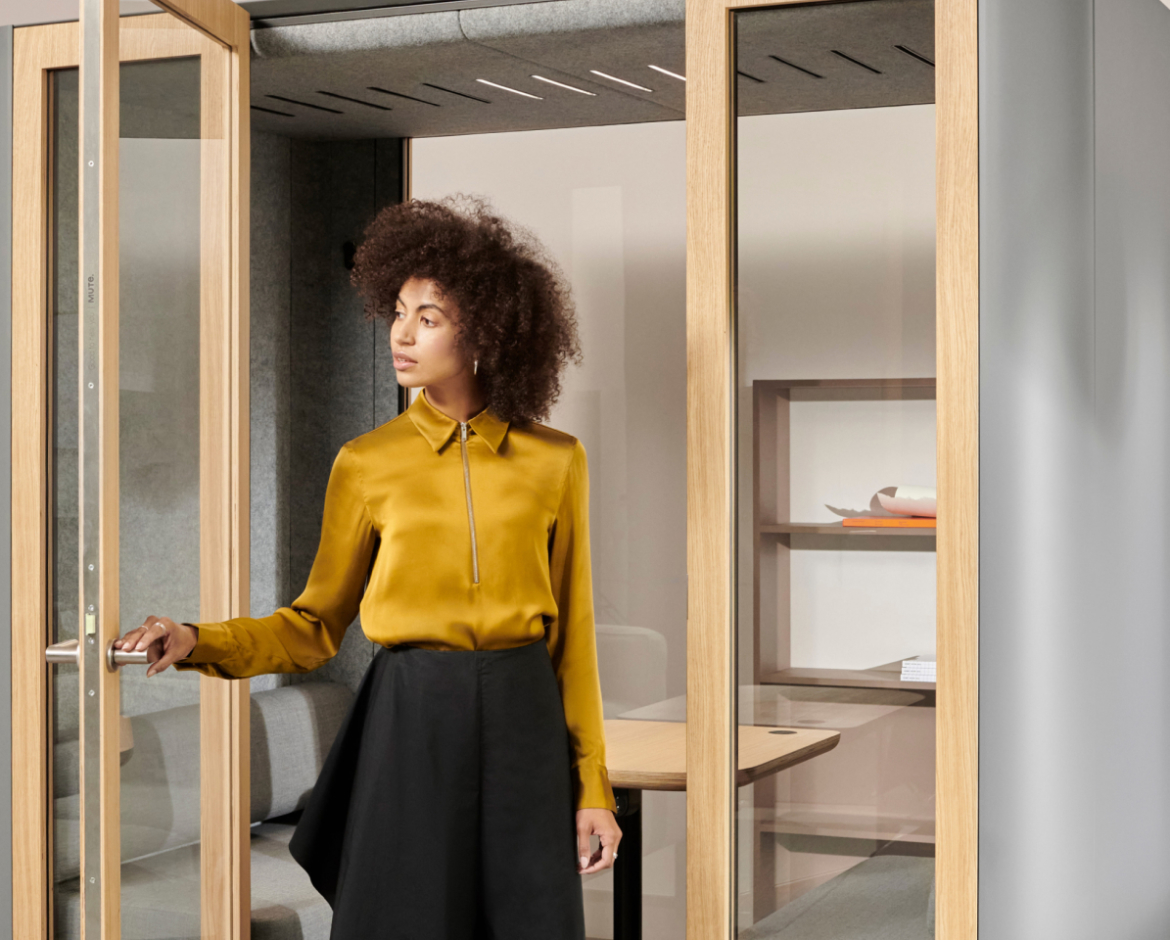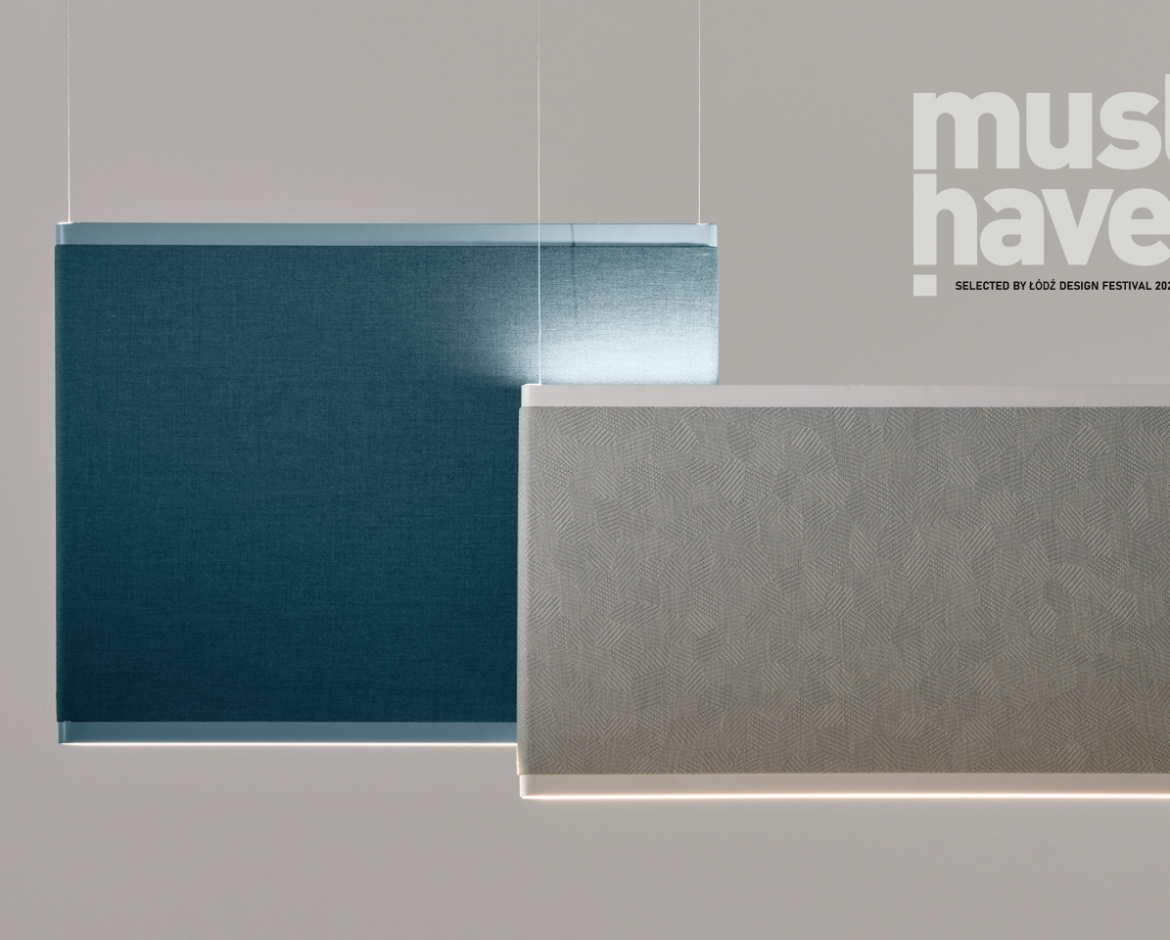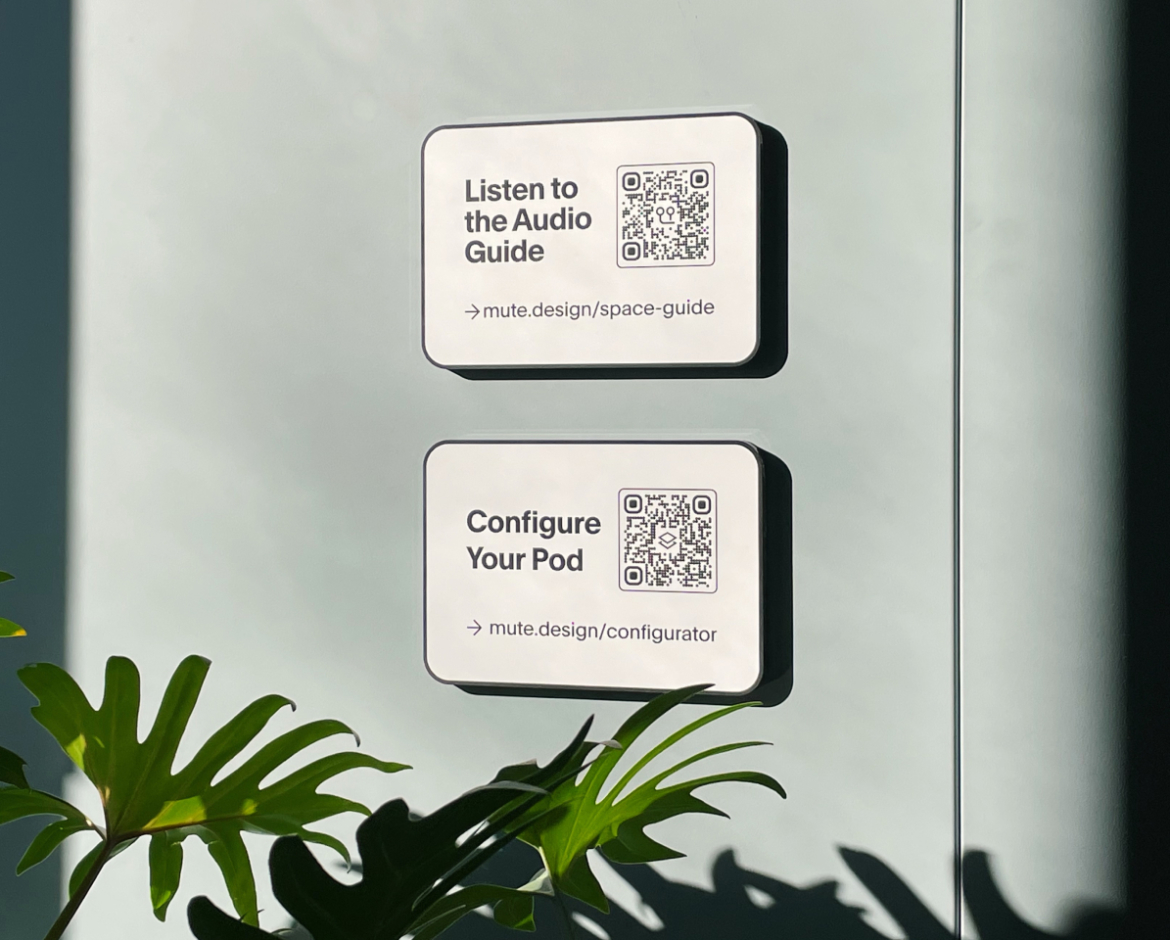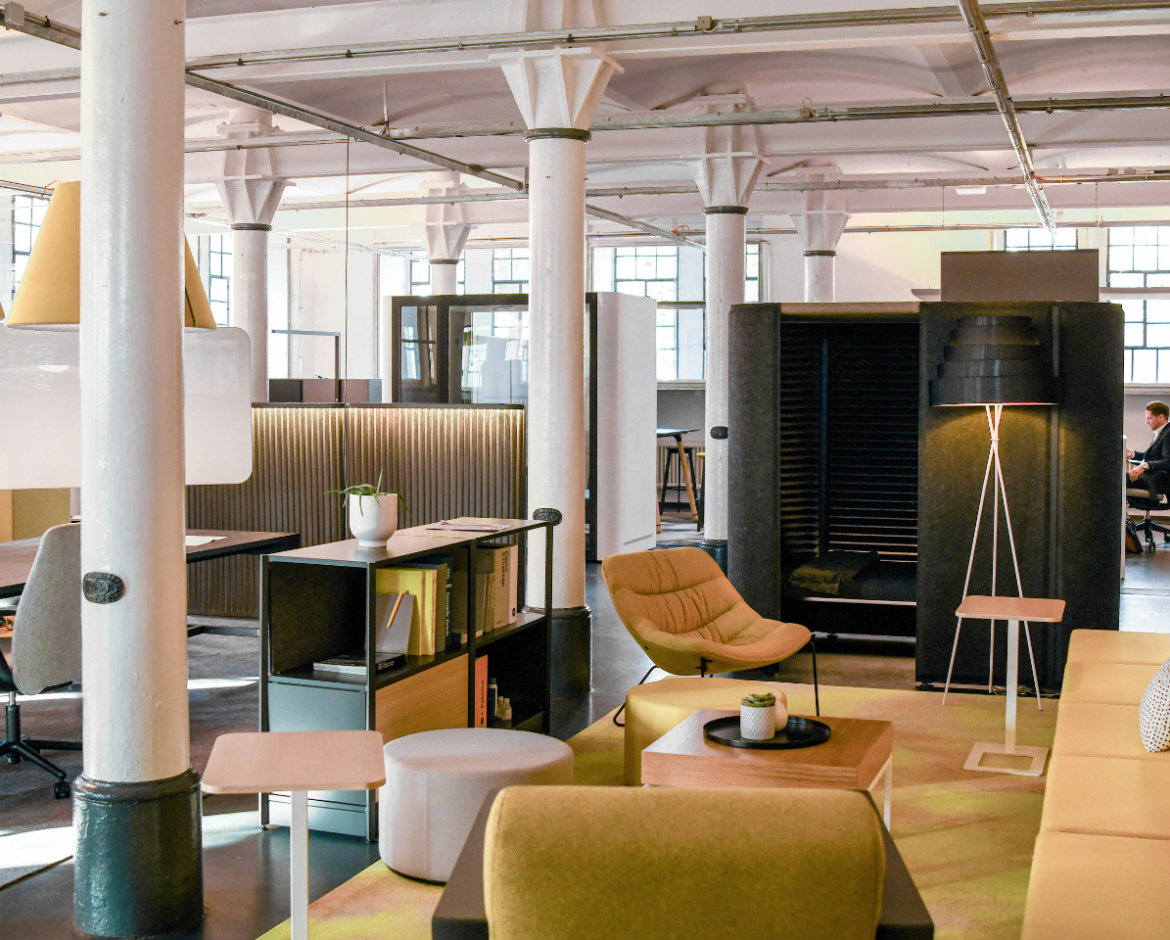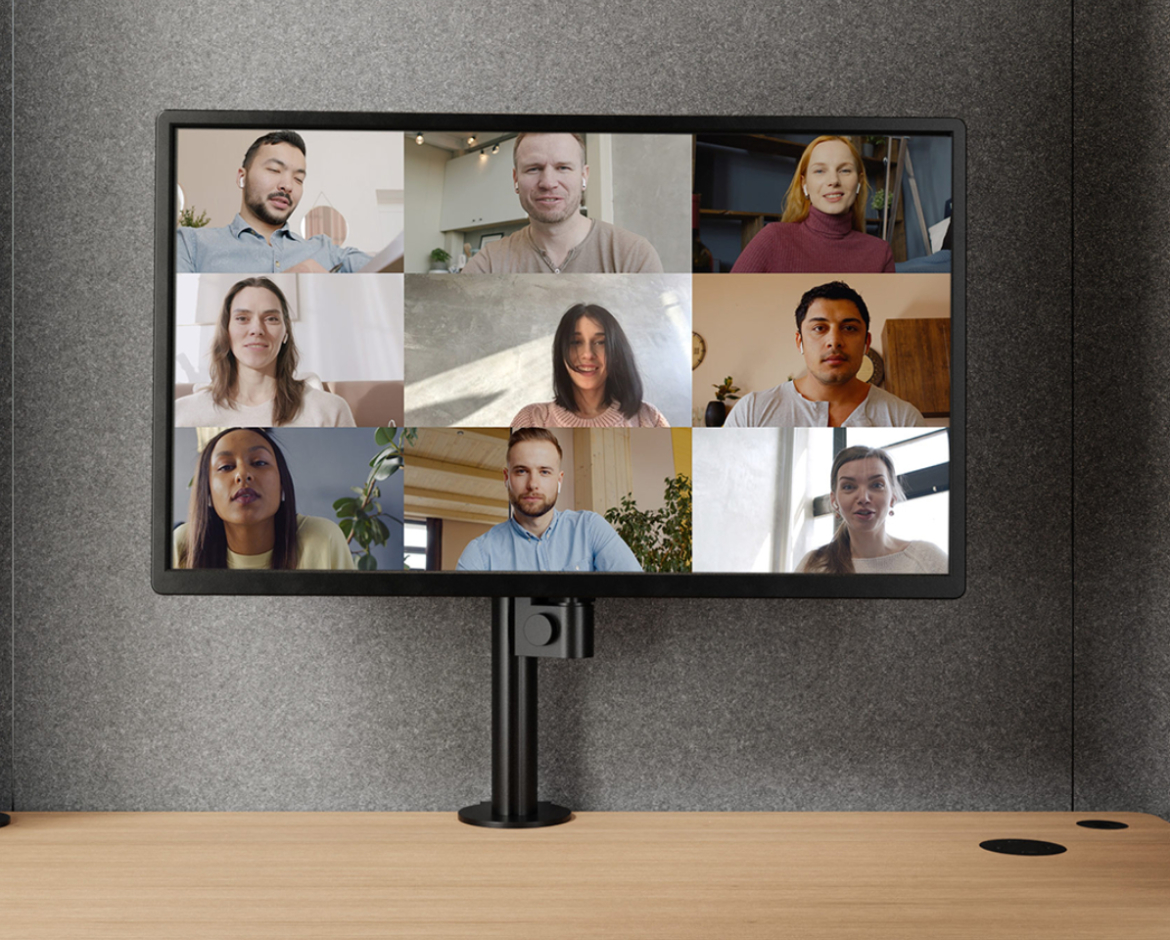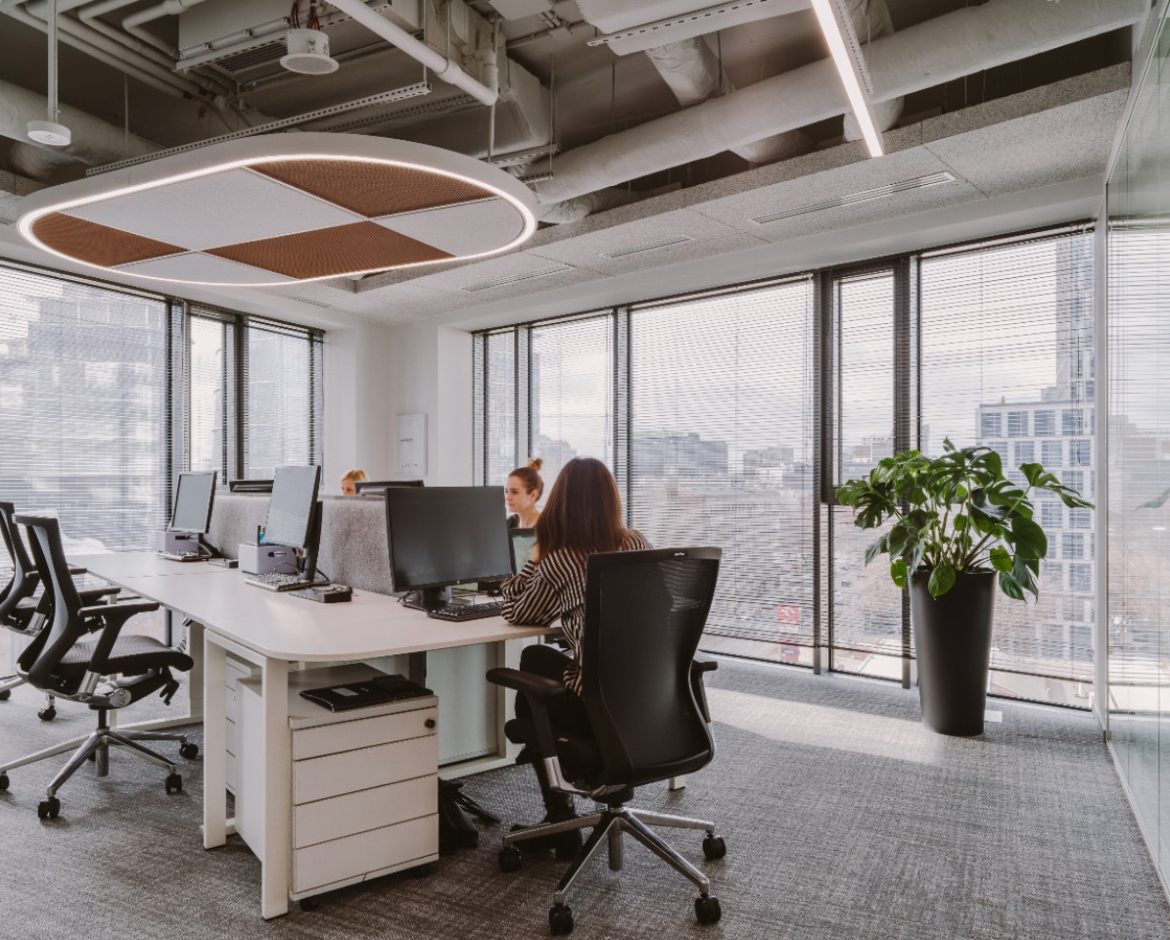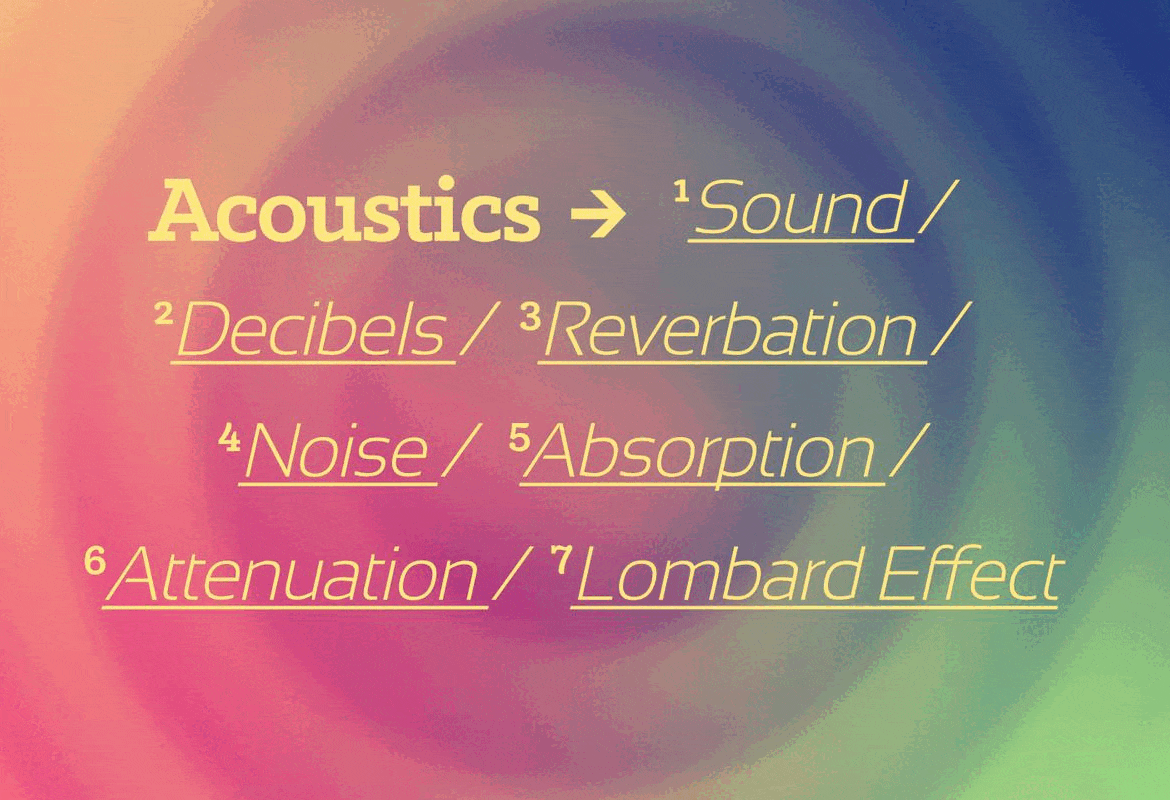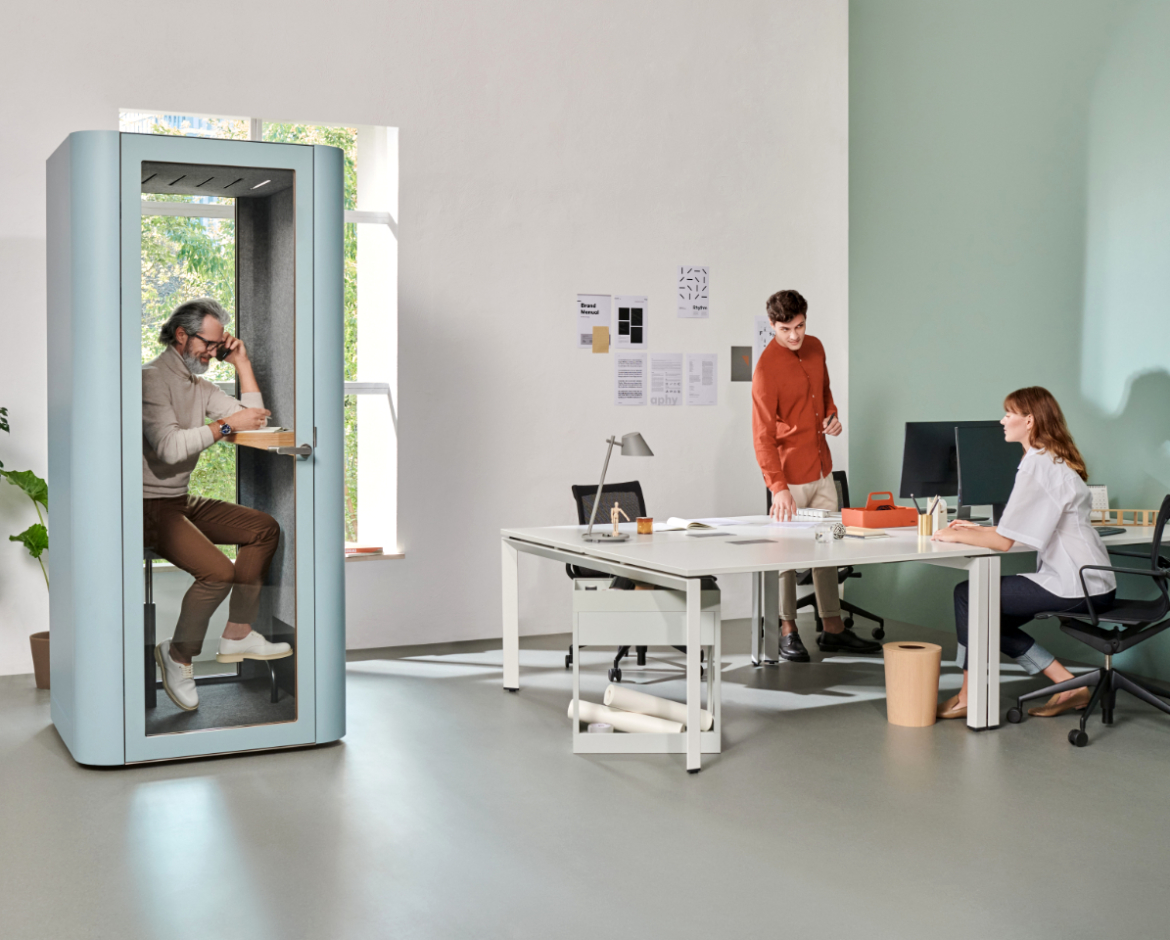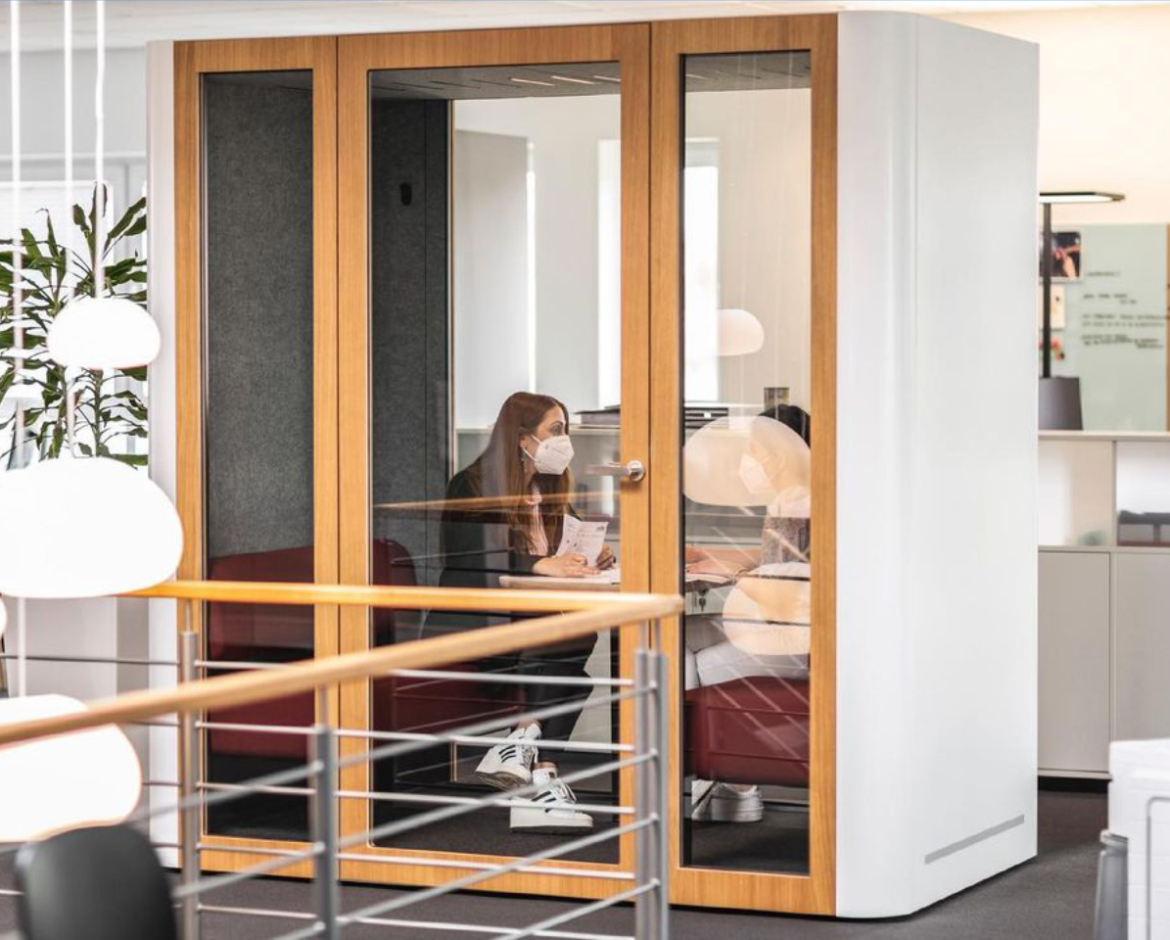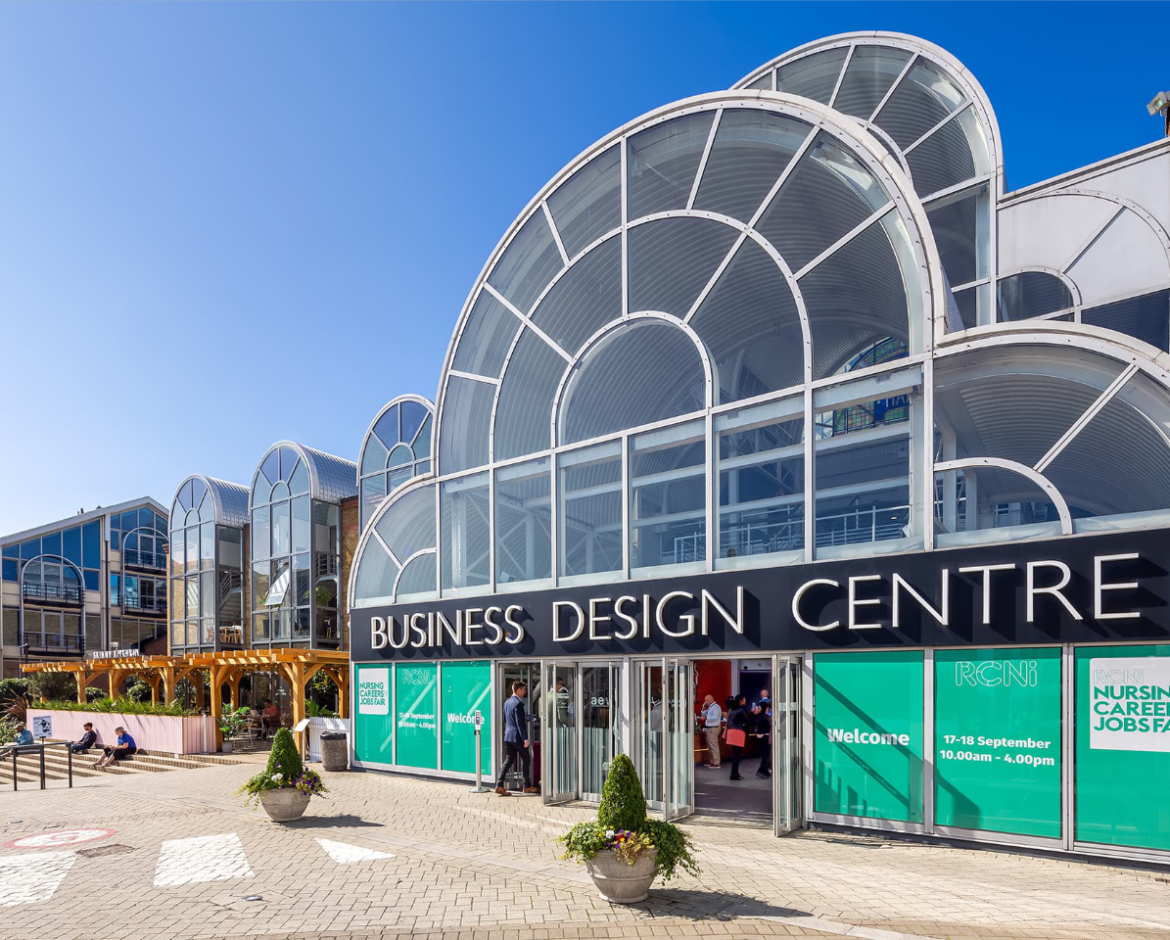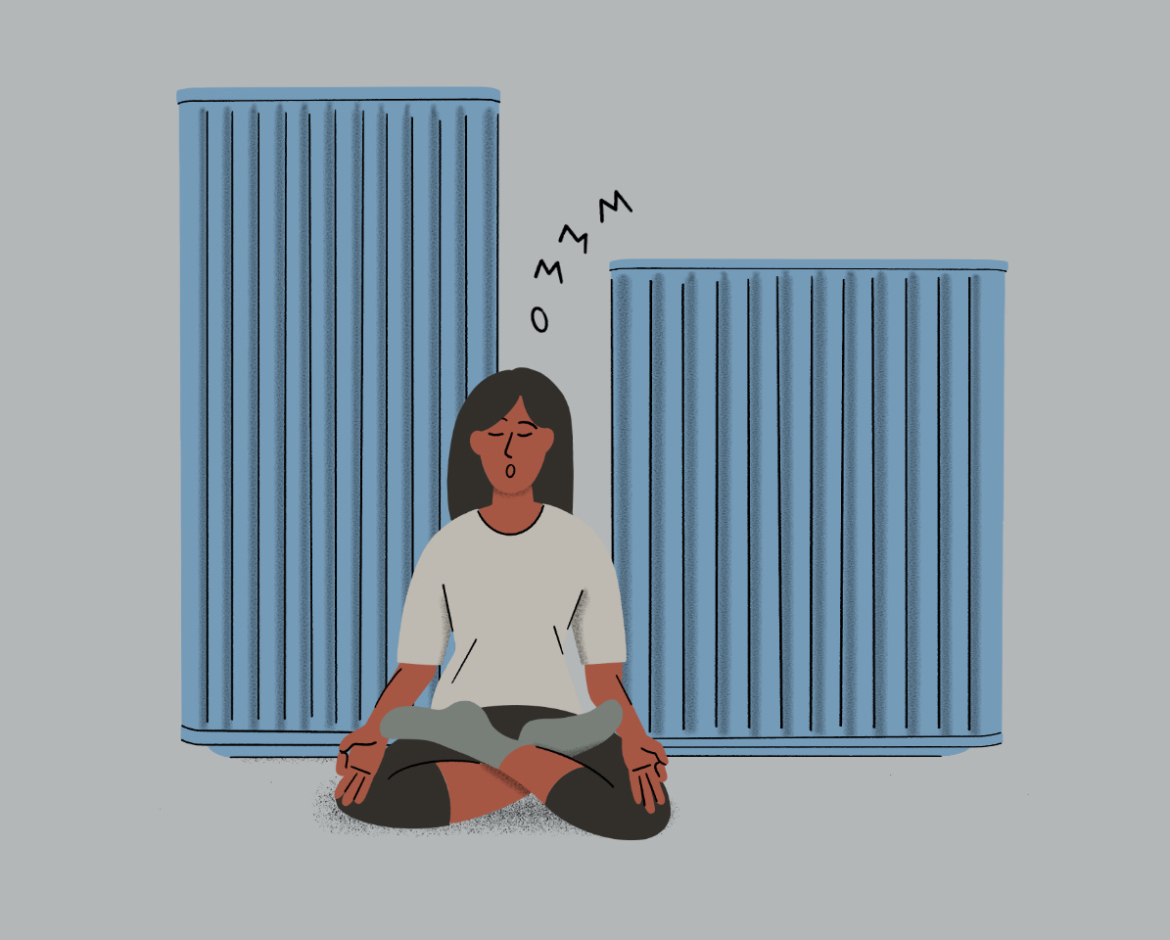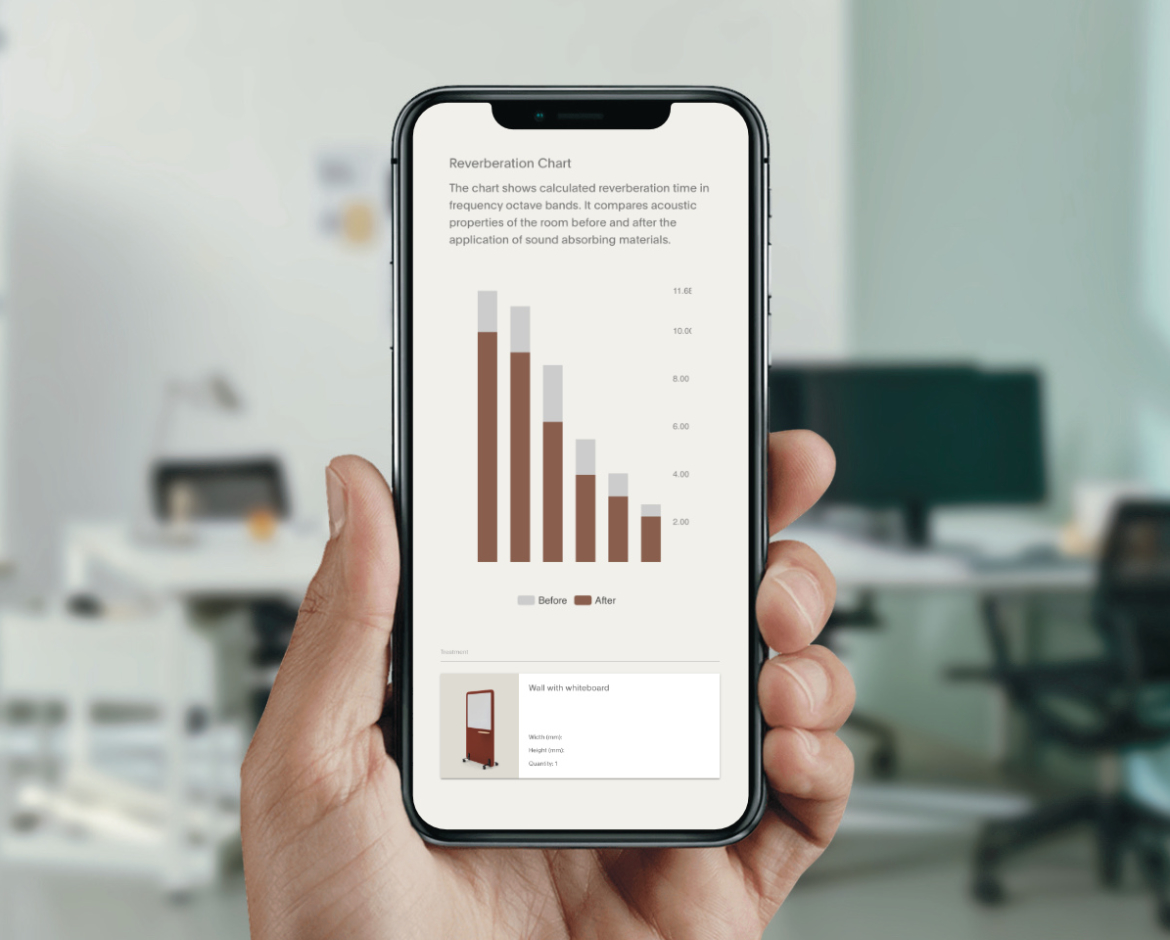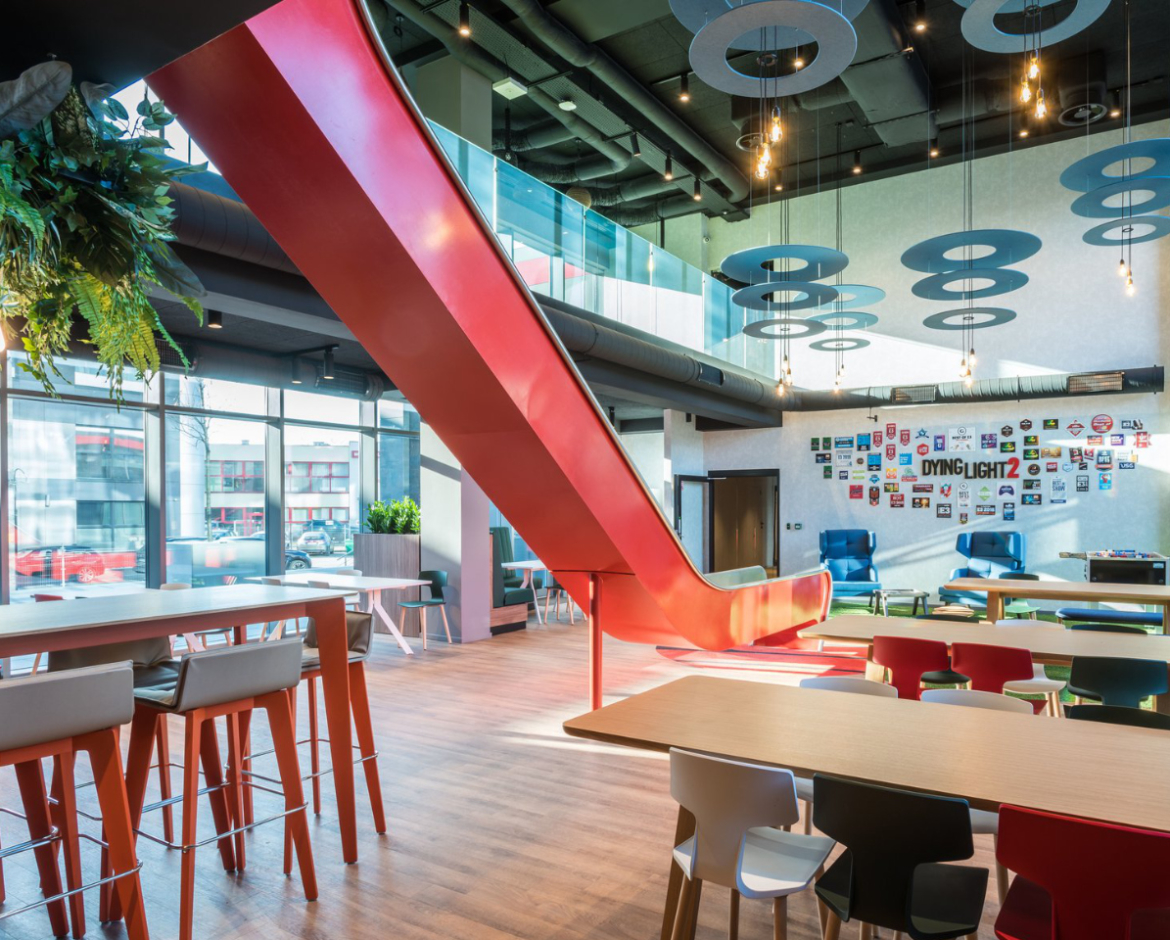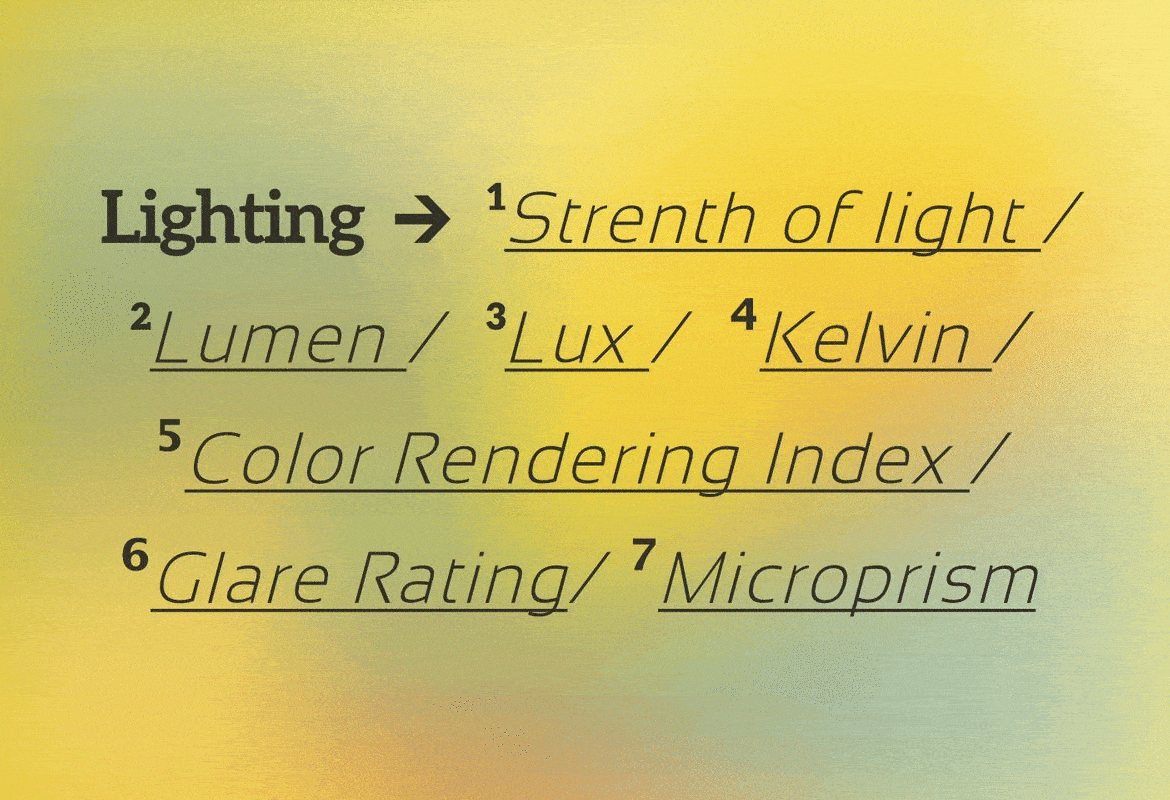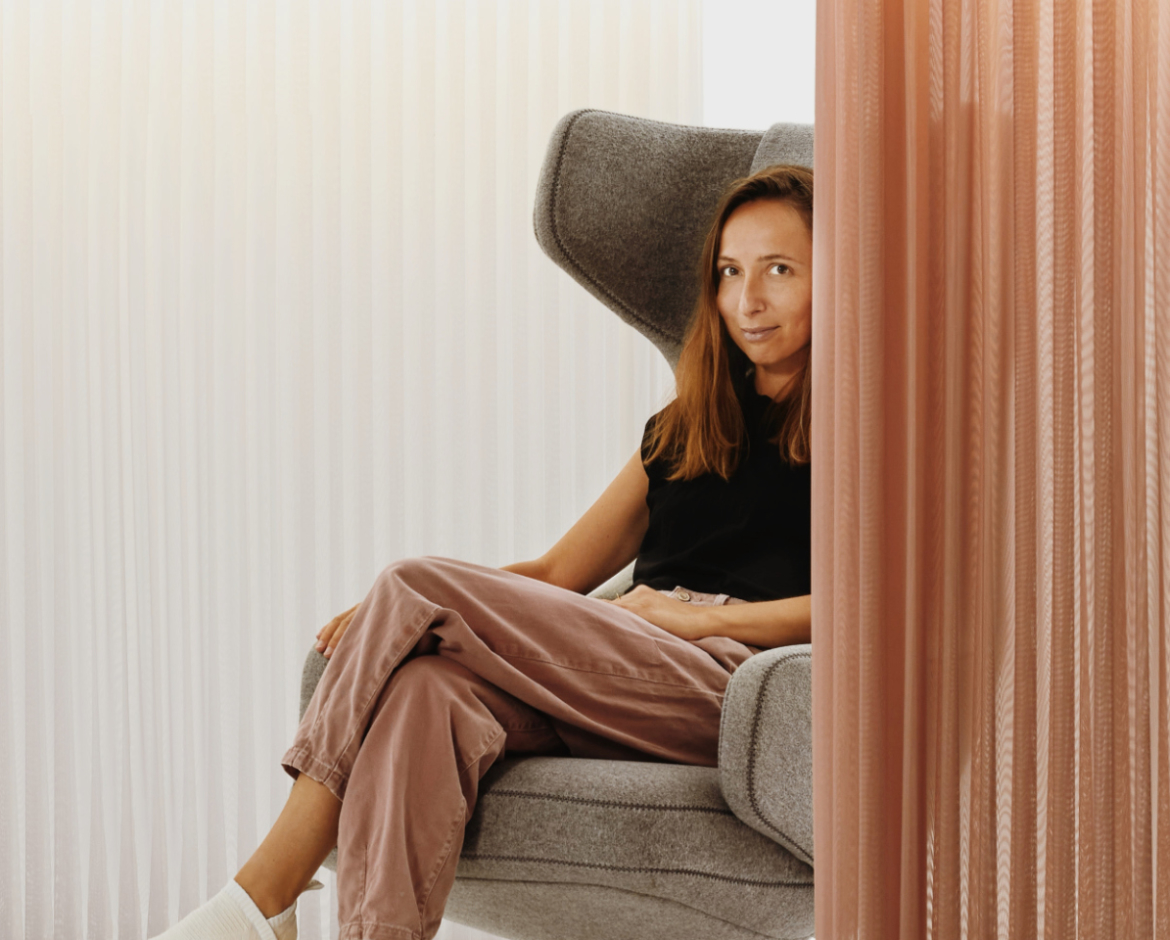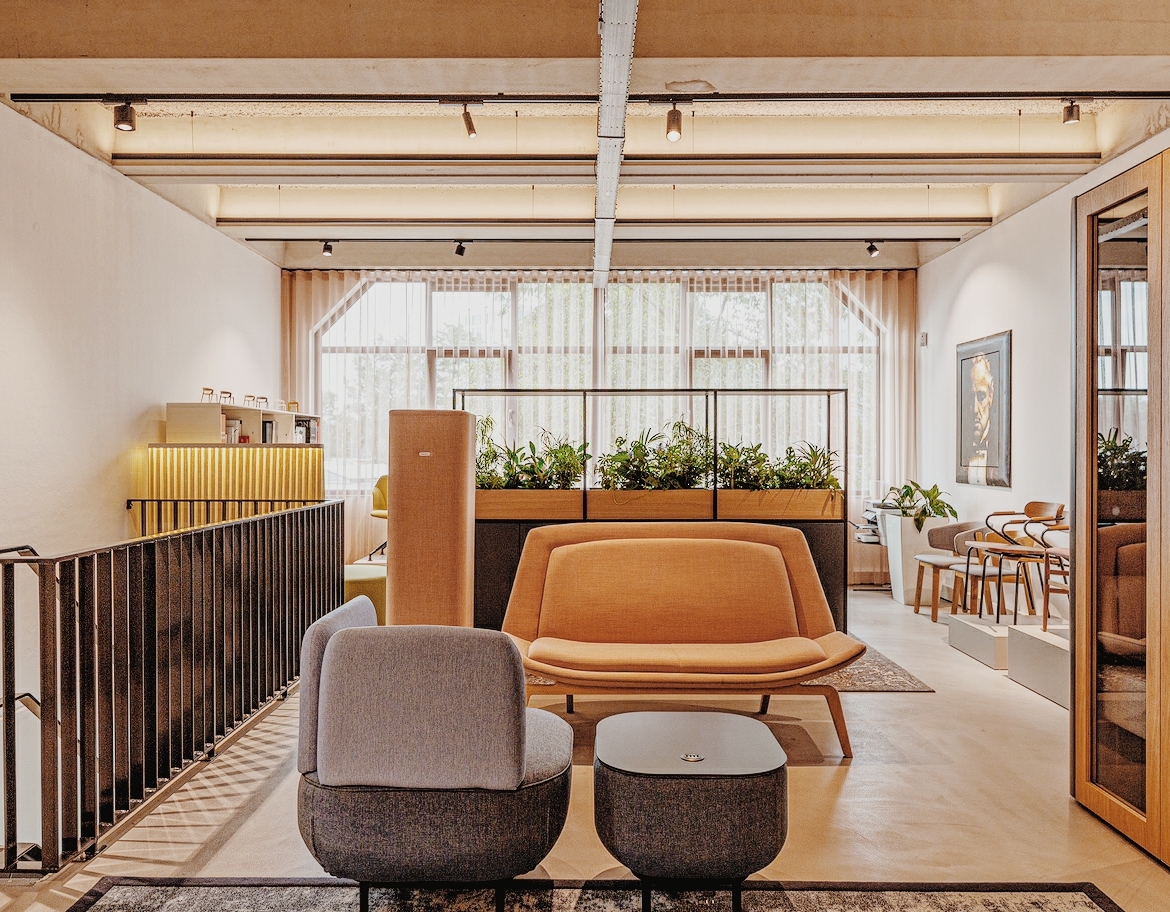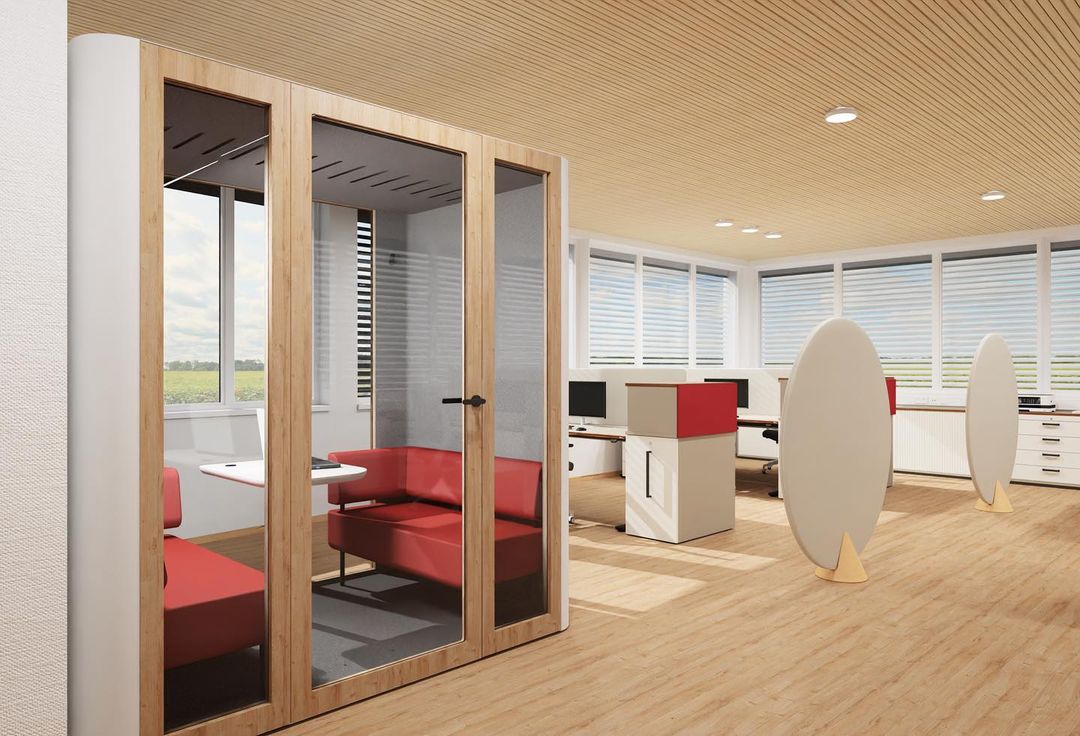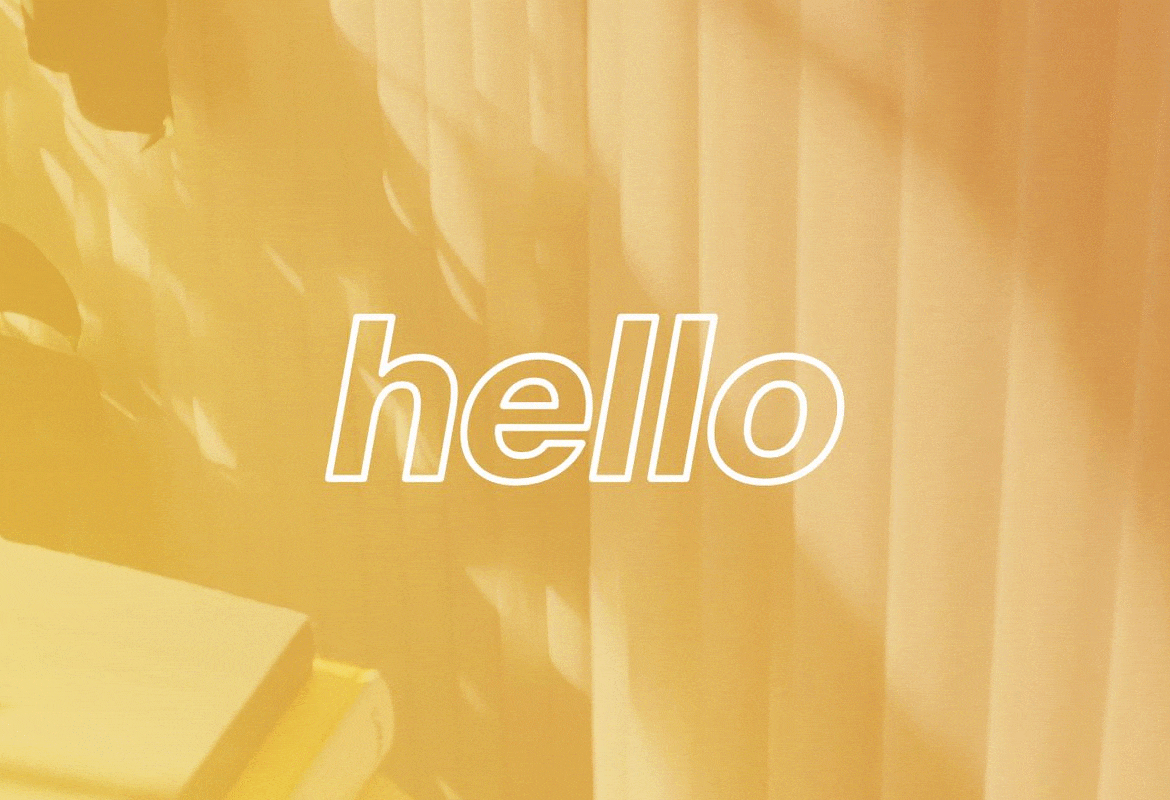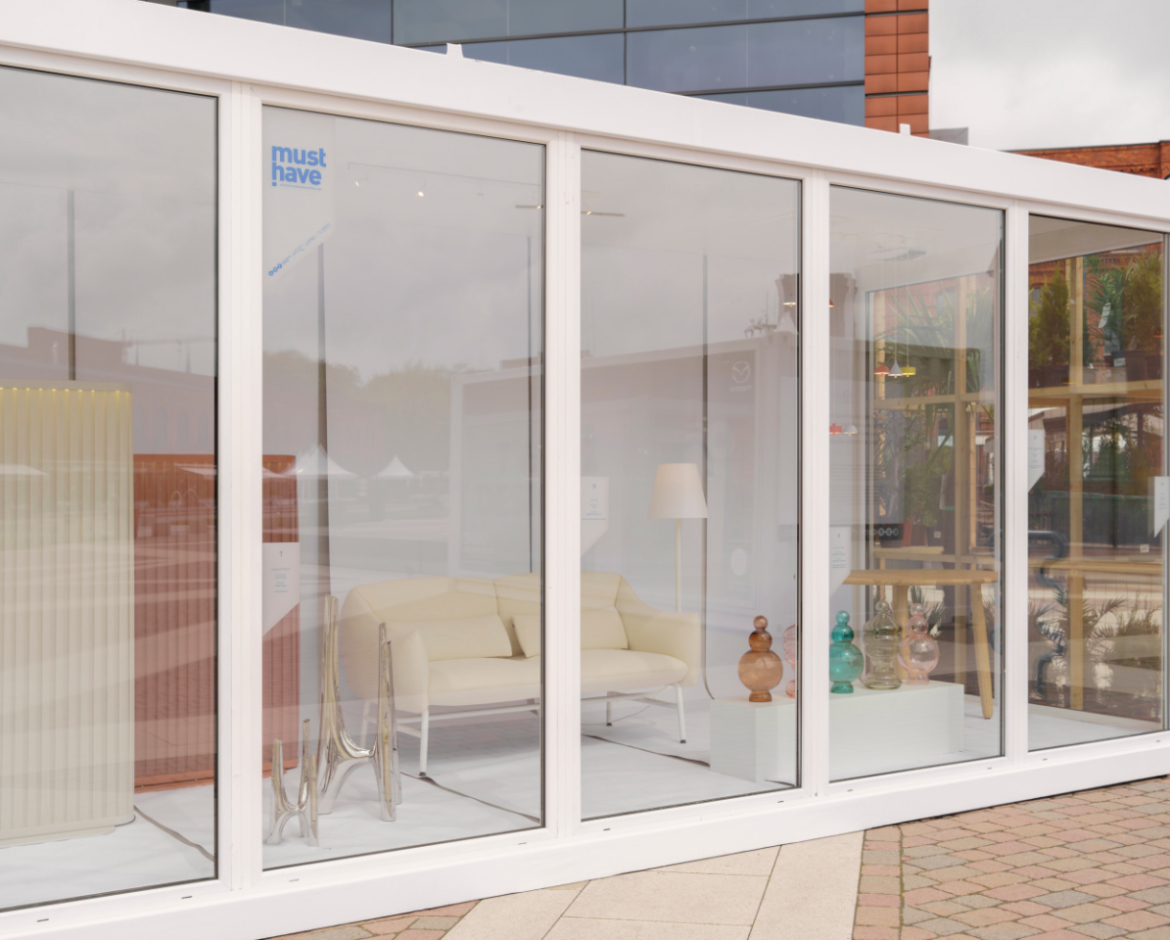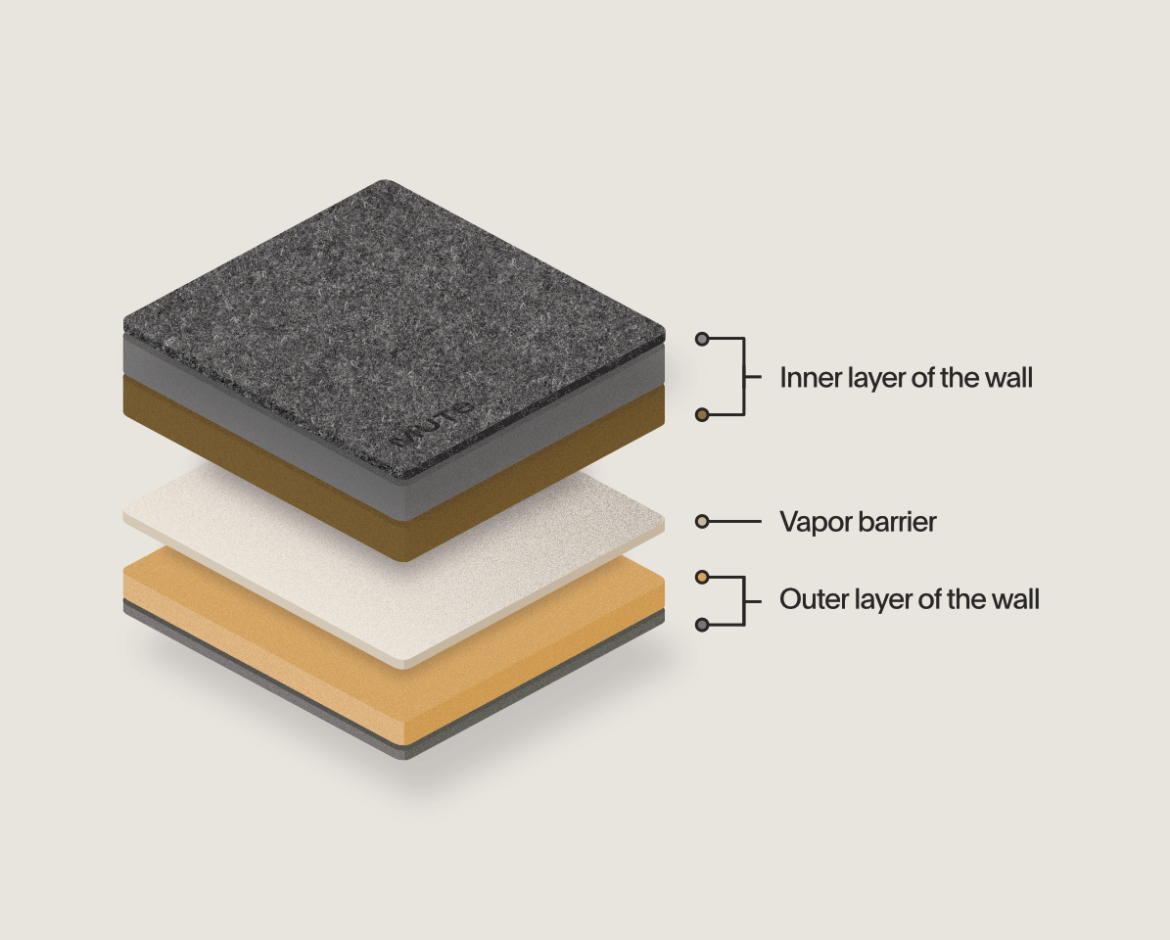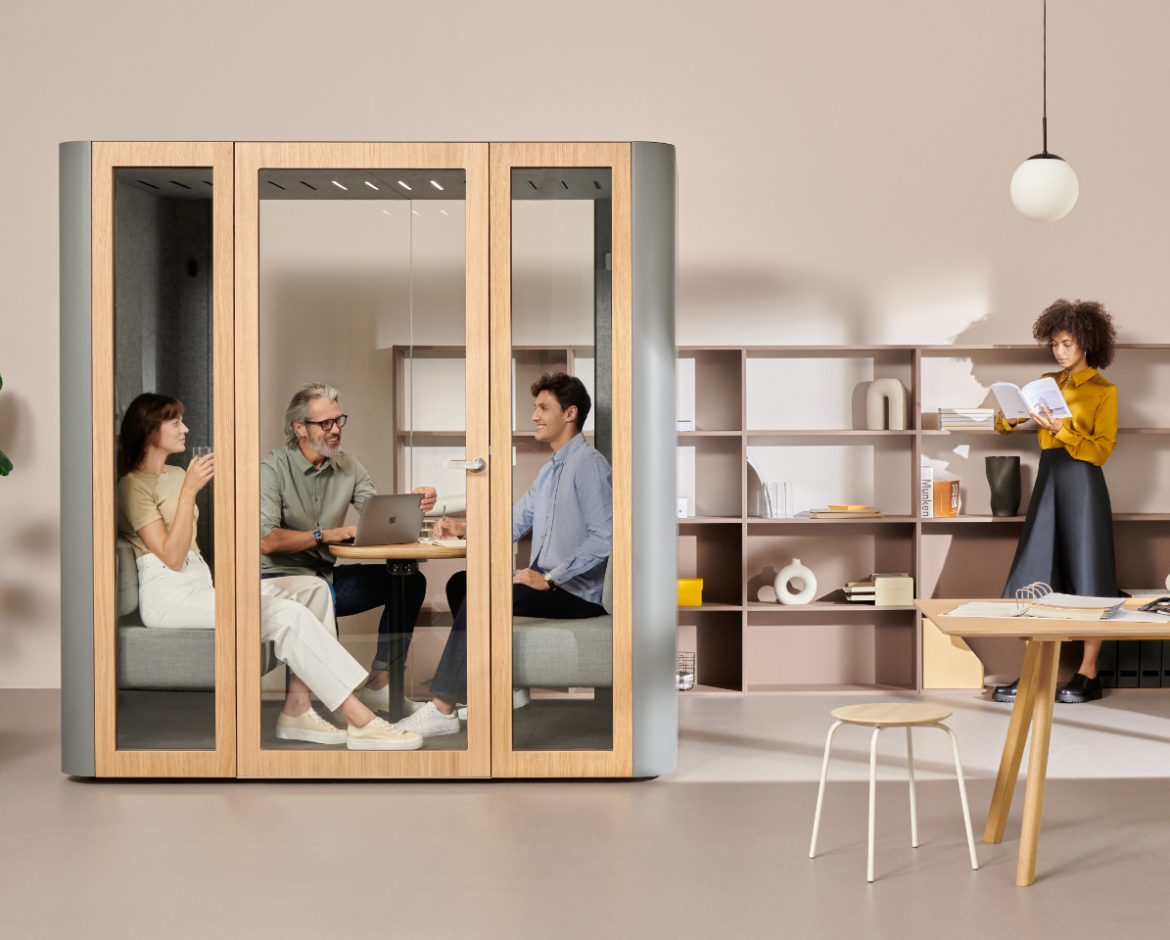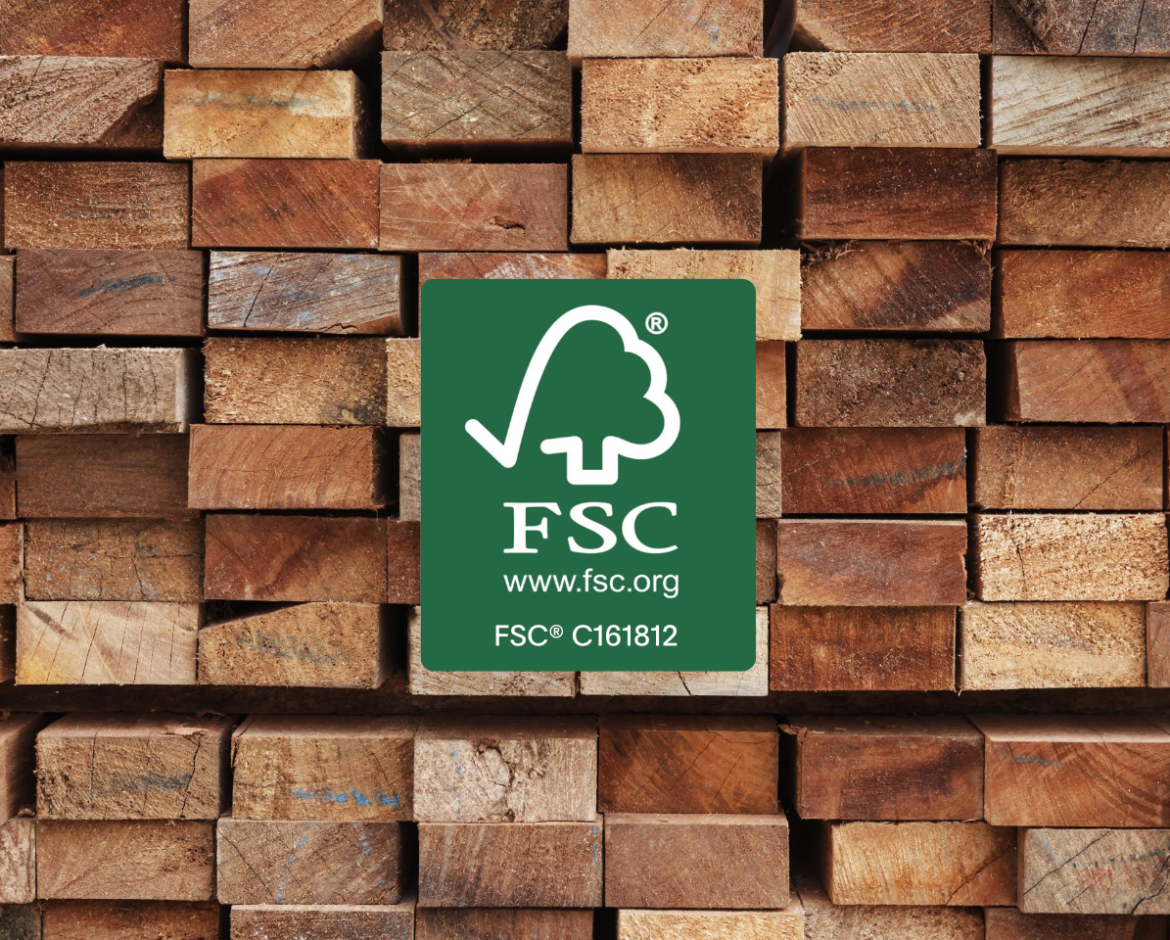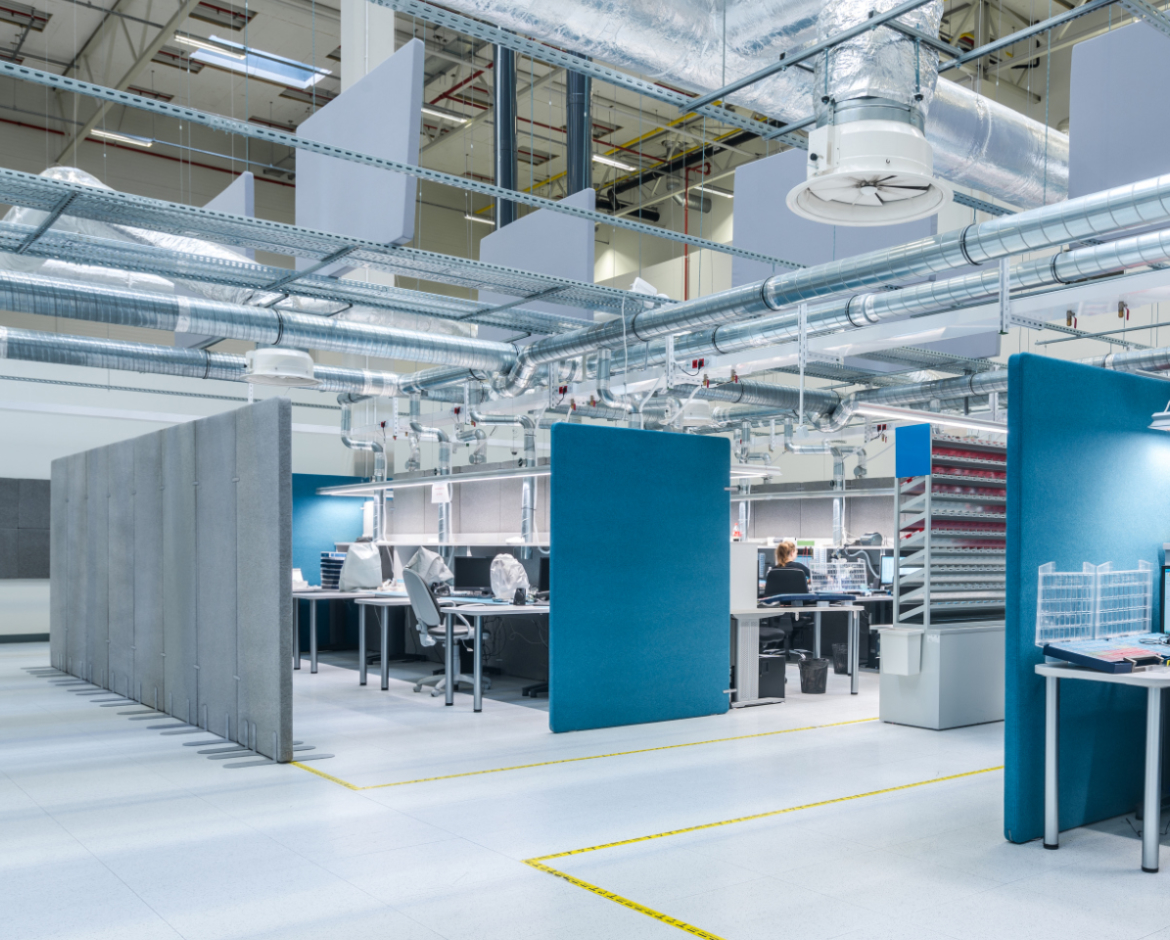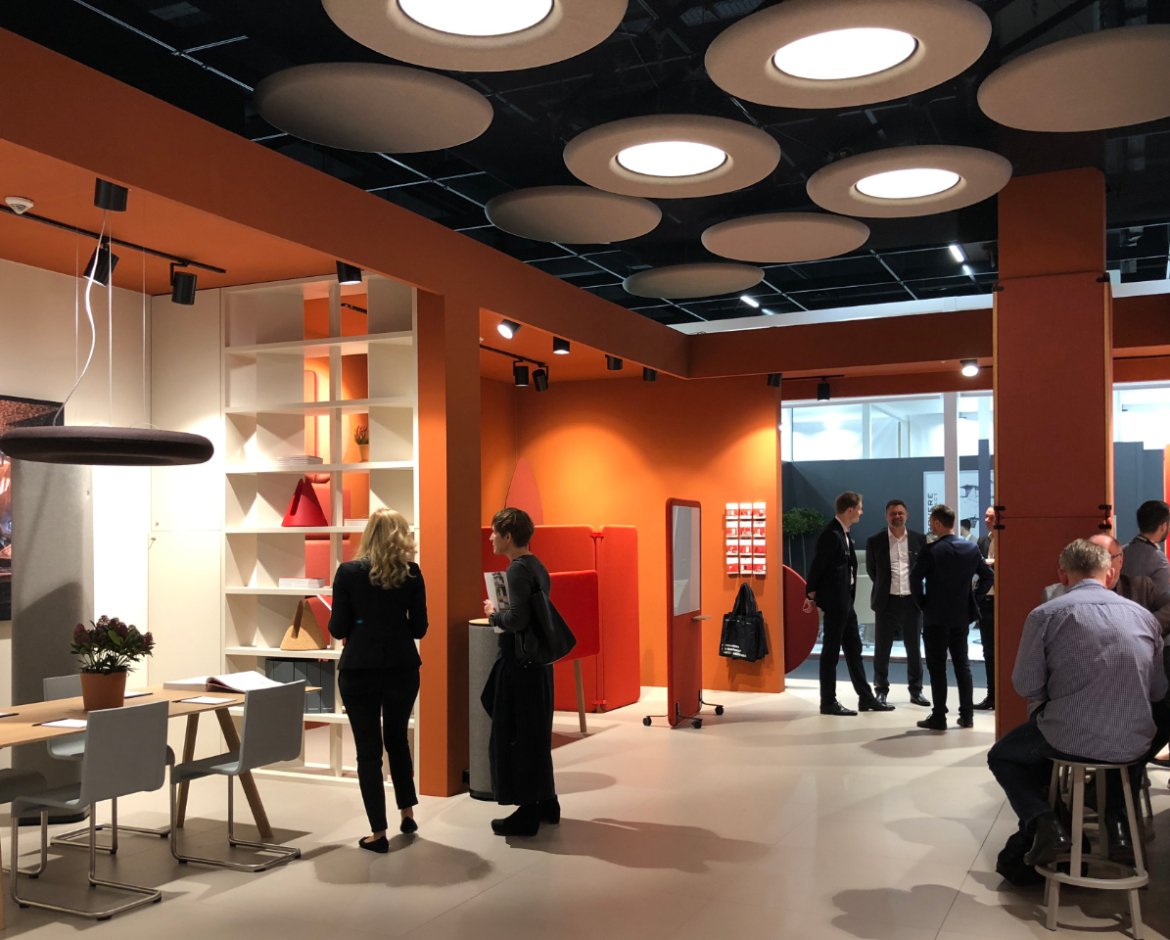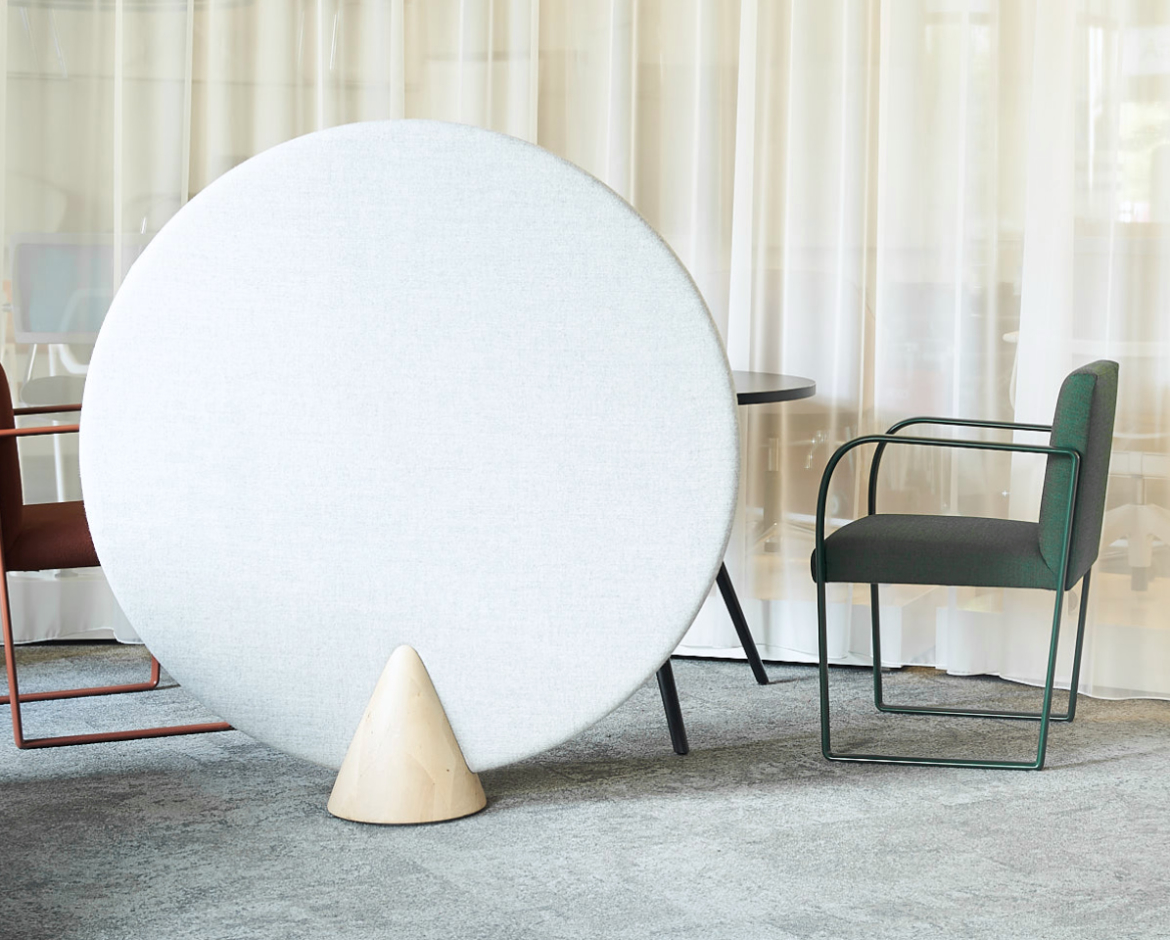Office distractions are the “elephant in the room” of the modern workplace. Nearly three out of four workers admit feeling distracted while on the job, but very few people bring up the problem to their managers. Let’s face it: if you are reading this article at your office, you will probably get distracted at least once in the process.
Is there a solution to office distractions? In the previous article, we proposed several ideas, and, unsurprisingly, one of those suggestions was to use office pods as a place for focused and creative work. Today, we’ll dive a bit deeper into how to fully utilize acoustic pods, including where to place them for maximum efficiency and productivity. We’re sure these tips will help you create cozy shelters for employees who need a place to focus. Let’s start!
This article is a part of the Acoustic Pods Consumers Guide, which we created to address the most crucial questions about acoustic pods. The guide walks you through how to choose the right pod, place it within your office and introduce it to your team. Download your guide here.
Don’t put pods too close to workstations
While some soundproof pods can be placed close to workstations for easy access, pods purchased specifically to provide spaces for focused work need to be located further away. There are three main reasons for this:
→ To escape distractions: When you want to finish an important task – like a presentation, data analysis, or a blog post – it’s best to sit down in a secluded place to focus. It’s simple: the further you go from your desk, the less likely your colleagues will drop by to ask about something or to show you the latest meme. Ideally, try to cut off all electronic distractors like emails and social media for a while to give your full attention to the task.
→ To boost creativity: It’s scientifically proven that walking boosts creative thinking. Researchers from Stanford University found that the creative thinking of people while walking was 60 percent higher compared to those same people while sitting (Steve Jobs, known for his “walking brainstorms” would probably agree). We all know that the idea of dragging your laptop through the whole office doesn’t sound great to you. However, a brief walk across the office could help you come up with more innovative ideas.
→ To use the Commitment Rule: Building on the suggestion to walk a bit further from your desk, the more time and effort you put into getting to another part of the office for focused work, the higher your chances of staying put and finishing the task.
It’s a trick based on the “effect of commitment”, one of the six popular psychological rules coined by psychologist Robert Cialdini. The rule states that once we make a decision and take the first steps towards that decision, we feel internal pressure to behave consistently with that call. A few extra steps could work wonders and make the time spent inside more effective.
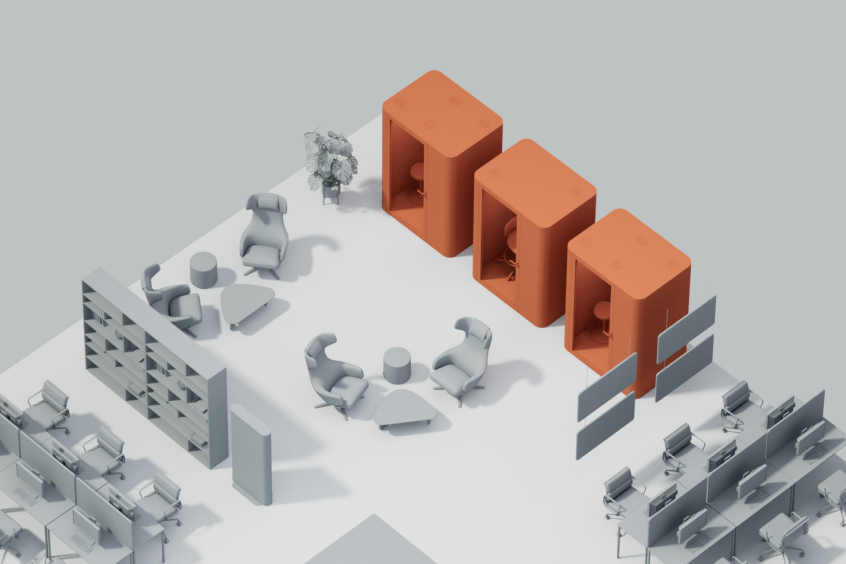
Group pods together to create “Focus Valley”
It’s invaluable when an employee is always sure that he has his own private workspace whenever he needs it. That’s why it’s better to have more than just one pod dedicated to focused work in the office, so more employees have a chance to use them. Consider creating a “Focus Valley” by grouping these pods together and away from the office’s main workstation areas. It could be some less-visited office alley or a part of a corridor.
Remember to leave at least 20 centimeters of free space above the pod’s ceiling and on both sides of the pod walls to ensure that pod’s fans work properly. You can also display posters on the pods’ walls that reinforce their function as areas of focus. It can be helpful to assign your pods with a specific purpose so employees make the most of them.
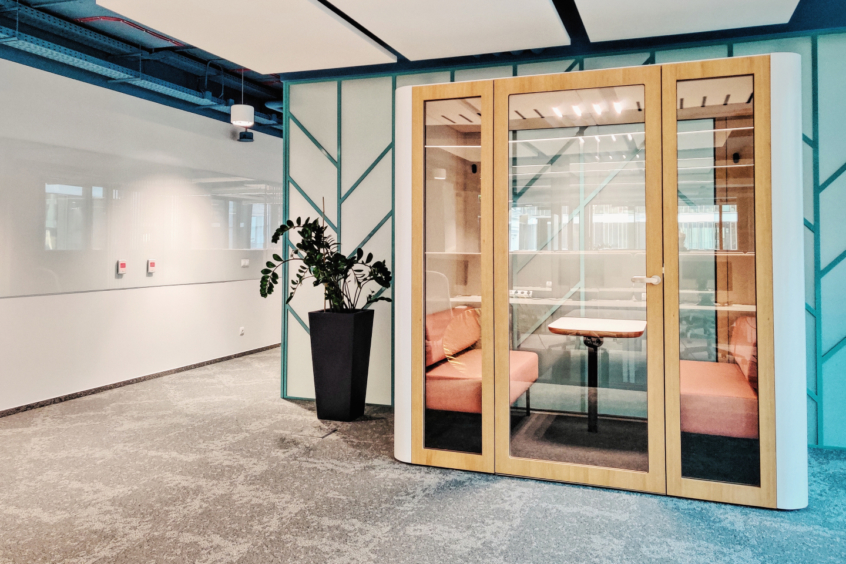
Use the pods as “deep work” chambers
Deep work is a state of distraction-free concentration when your brain operates at its full potential. This level of focus allows you to work more efficiently, especially when it comes to learning challenging concepts more quickly or producing high-quality work.
How can you achieve a state of “deep work”? There are plenty of easy-to-implement guidelines, mainly regarding organizing your work, scheduling time, and training your brain to develop certain habits. Many of them point out that it’s essential to prepare a set of rituals before you start deep work. Going to a specially prepared, sound-isolated place, like an acoustic pod, could be one such ritual. Consider encouraging employees to block out time for “deep work” once a week. It will give them a window to concentrate on the task and signal to colleagues that they are unavailable. Moreover, it will help them plan their work better.
Want to learn more?
We believe acoustic pods are tools that, with smart use, can single-handedly transform your office into a better, more productive, and more joyful place. If you are eager to learn more, check out the complete Acoustic Pods Consumer Guide here.
You might also like
Infrastructure Giant VINCI Energies Revamps Office with Mute Modular
Future-Proofing Properties: Adaptability in Commercial Real Estate Market
Neuroarchitecture in the Workplace: How Space Can Affect Performance and Comfort
Sounds Like Change – Inside the New Spectacular CANPACK Workspace
Back to Basics: 3 Golden Rules to Follow While Buying Acoustic Pods
Glass Never Sounded Better – Inside the Marvelous Wutkowski Office
Eudaimonia Machine – What Does an Ideal “Deep Work” Office Look Like?
How Trzop Architekci Brought Silence and Tranquility to the L’Oreal Office
How the Pandemic Helped Us Realize What the Perfect Workspace Looks Like
Well-Being Boosters: 4 Reasons to Improve the Acoustics in Your Office
How Widex Boosted Their Quality Index Up to 98% with Top Acoustic Solutions
How Widex Boosted Their Quality Index Up to 98% with Top Acoustic Solutions
Be the first to know!
Join our newsletter and keep your inbox energized!
Don’t miss out on product launches and all major updates concerning our offers.
